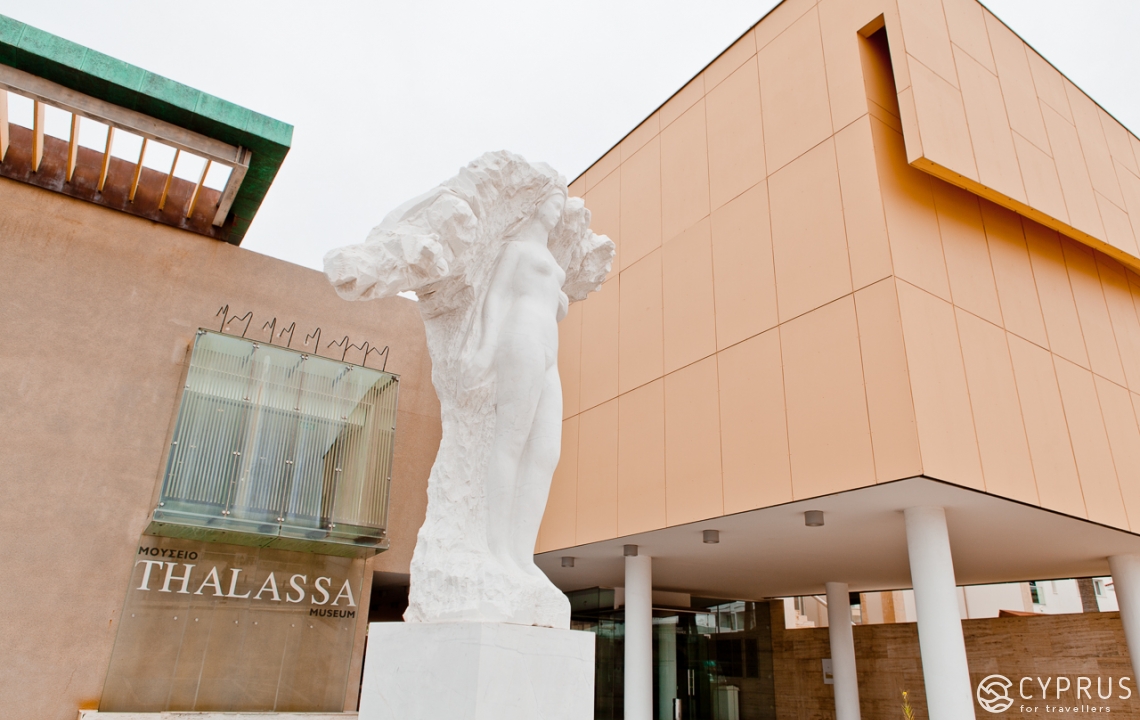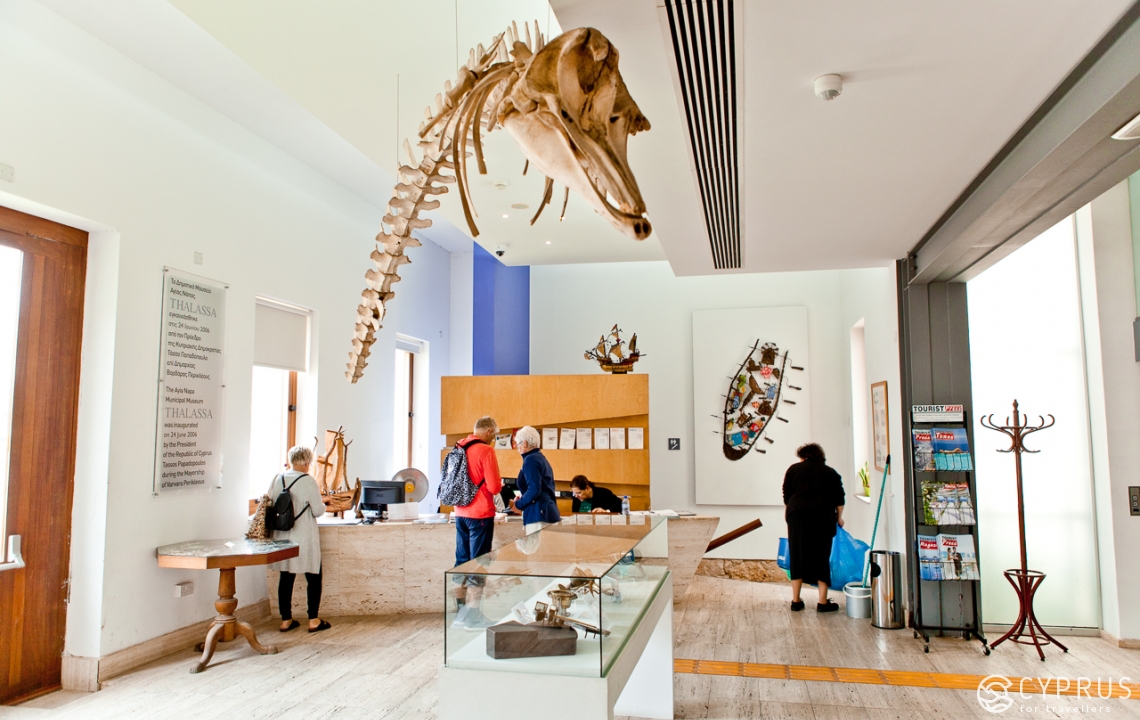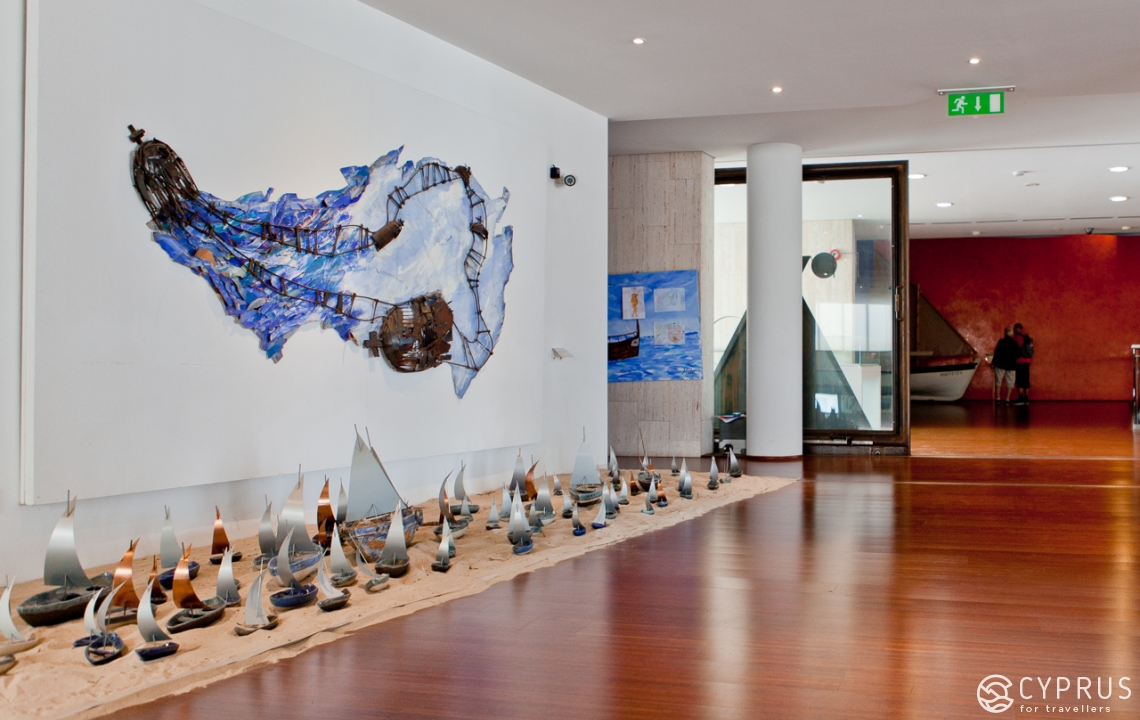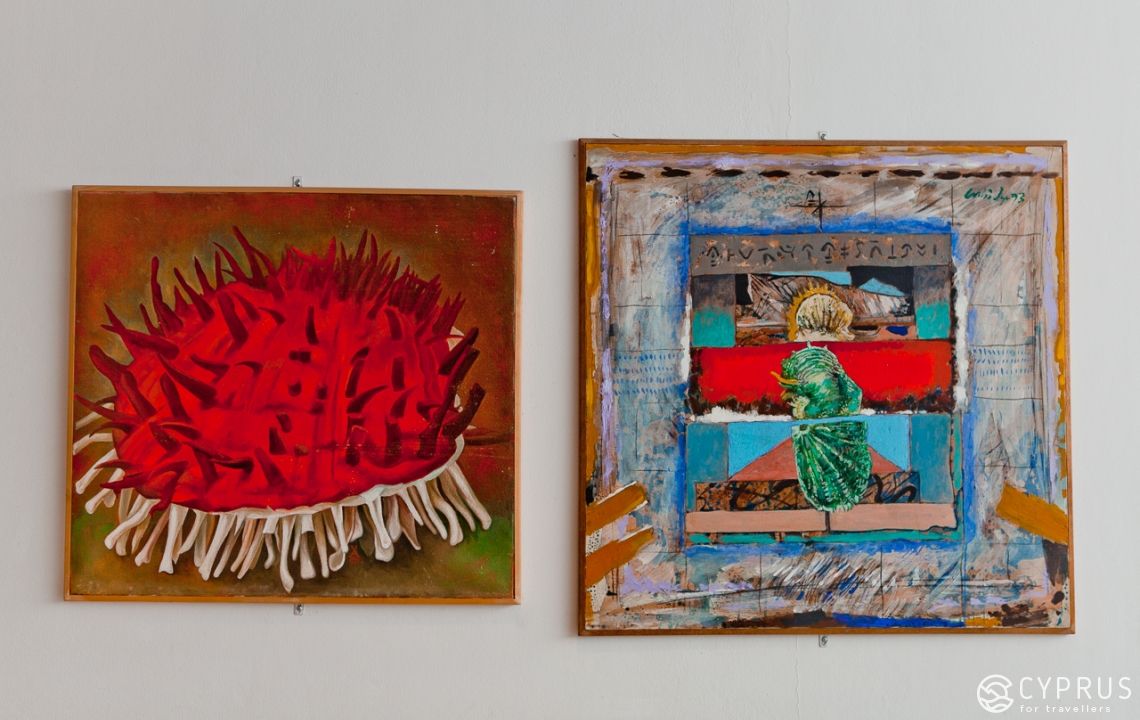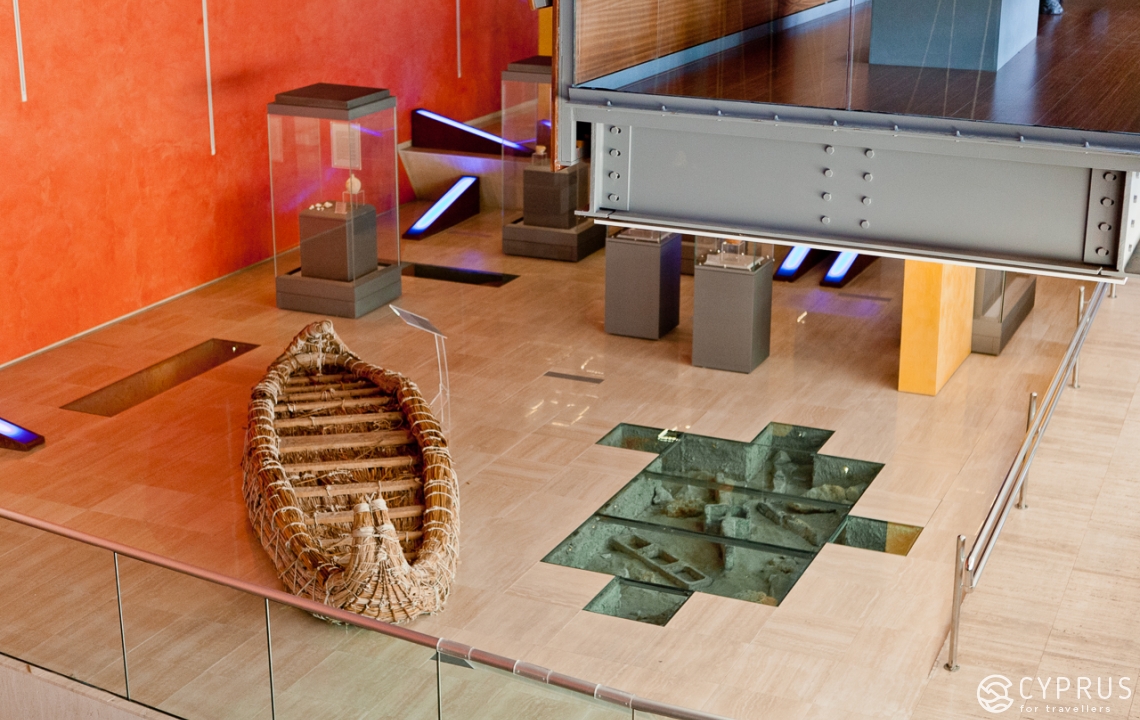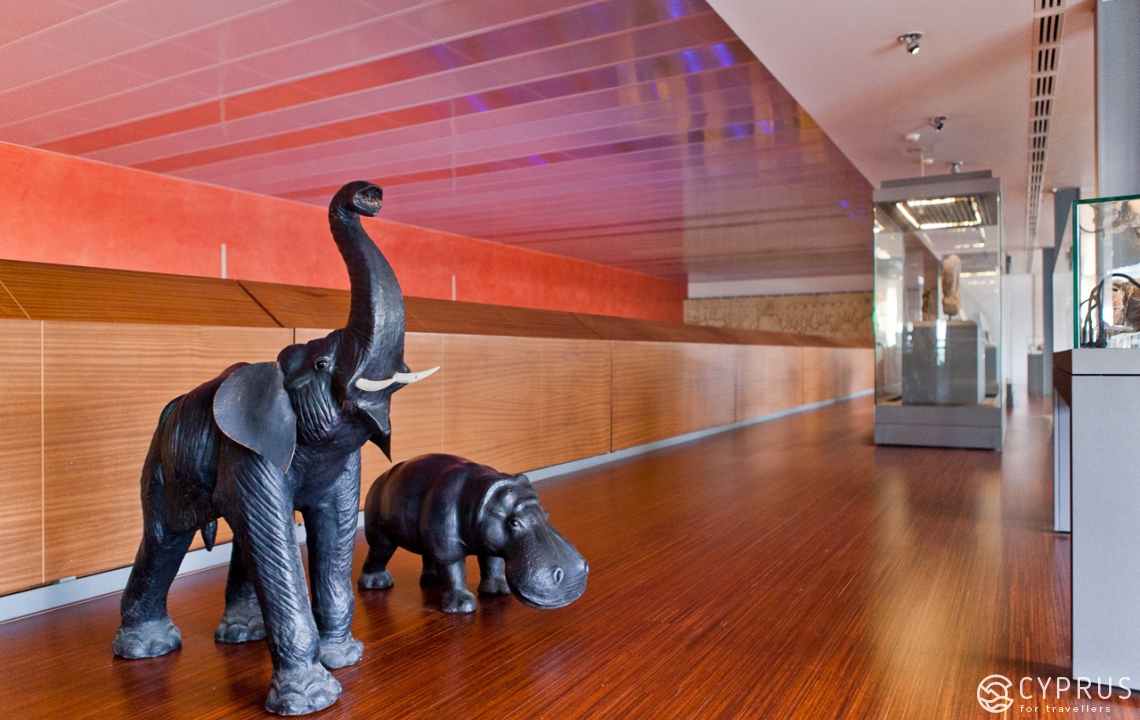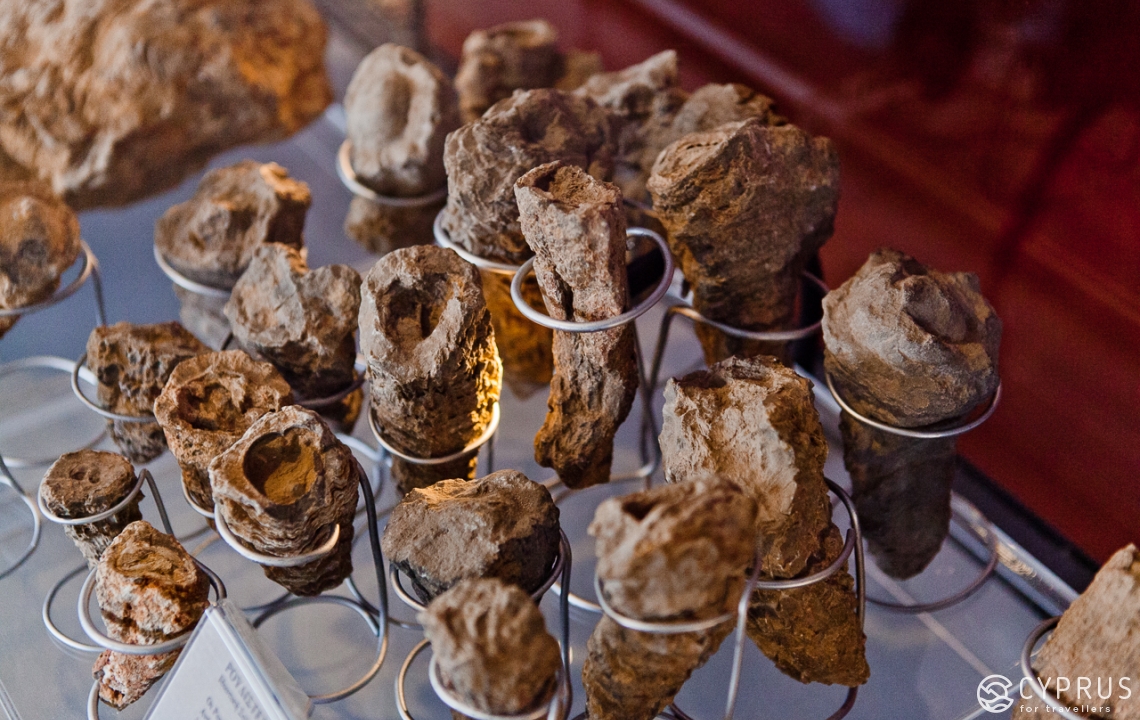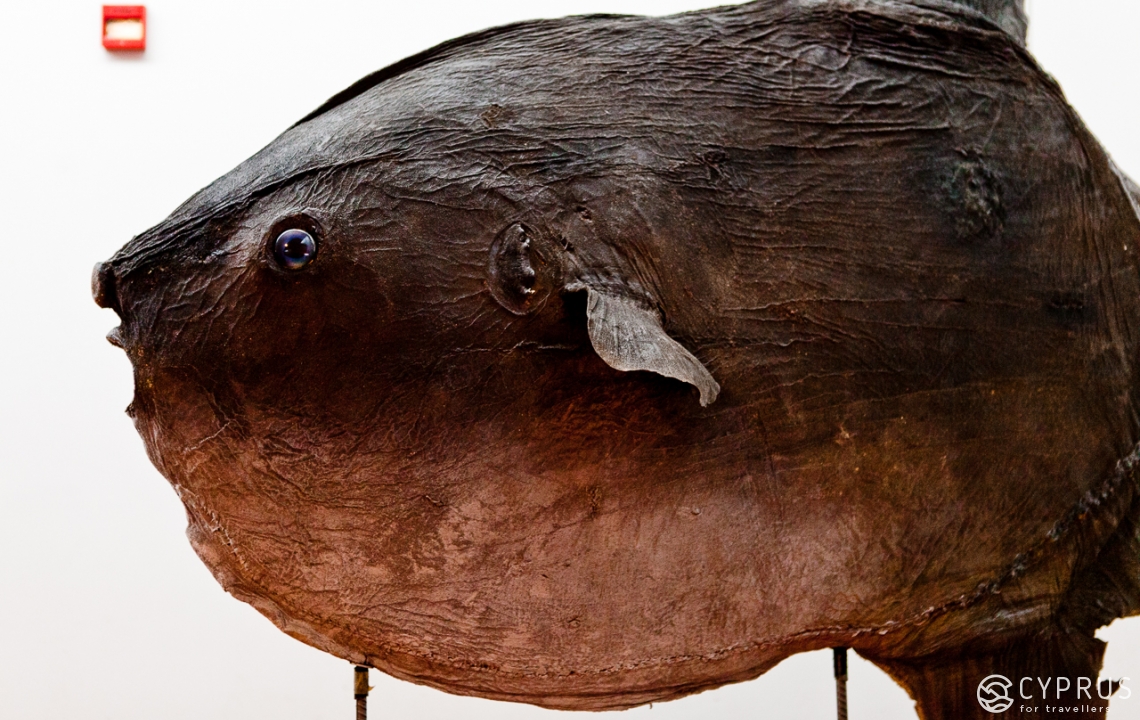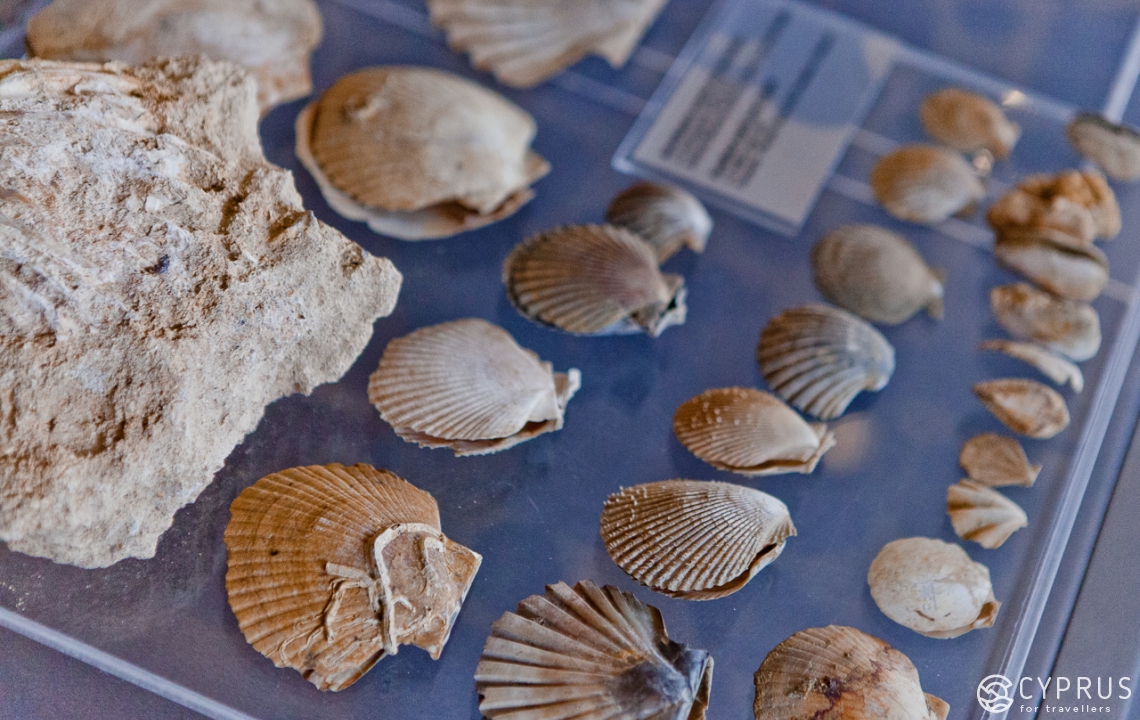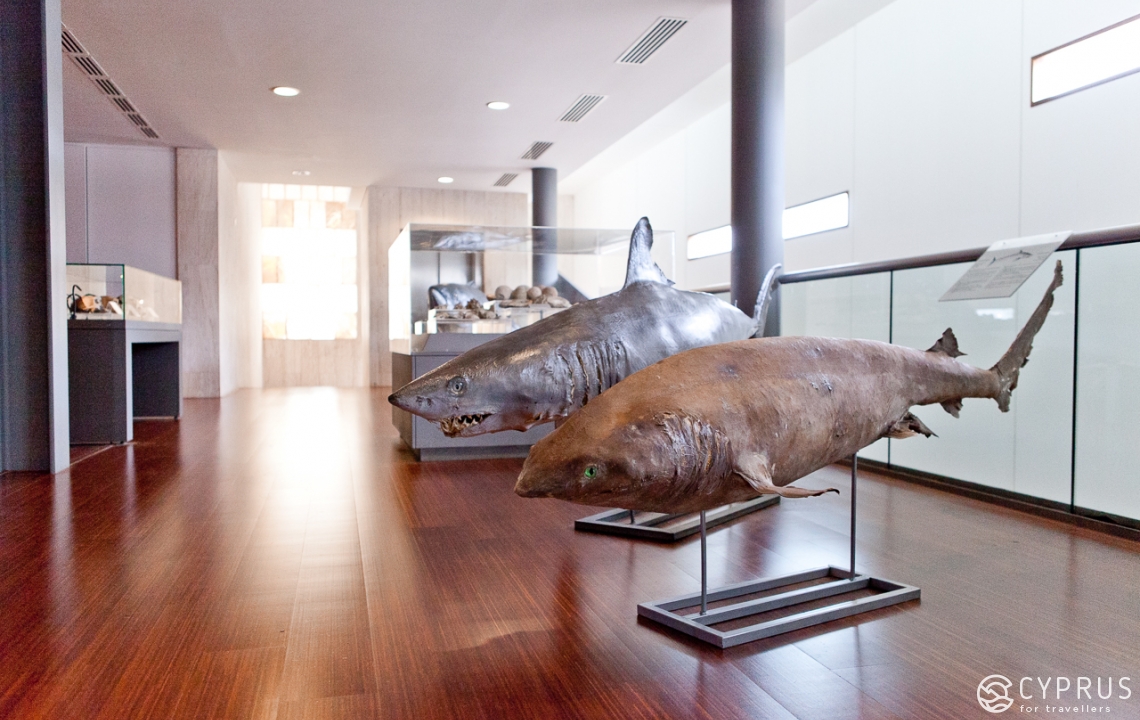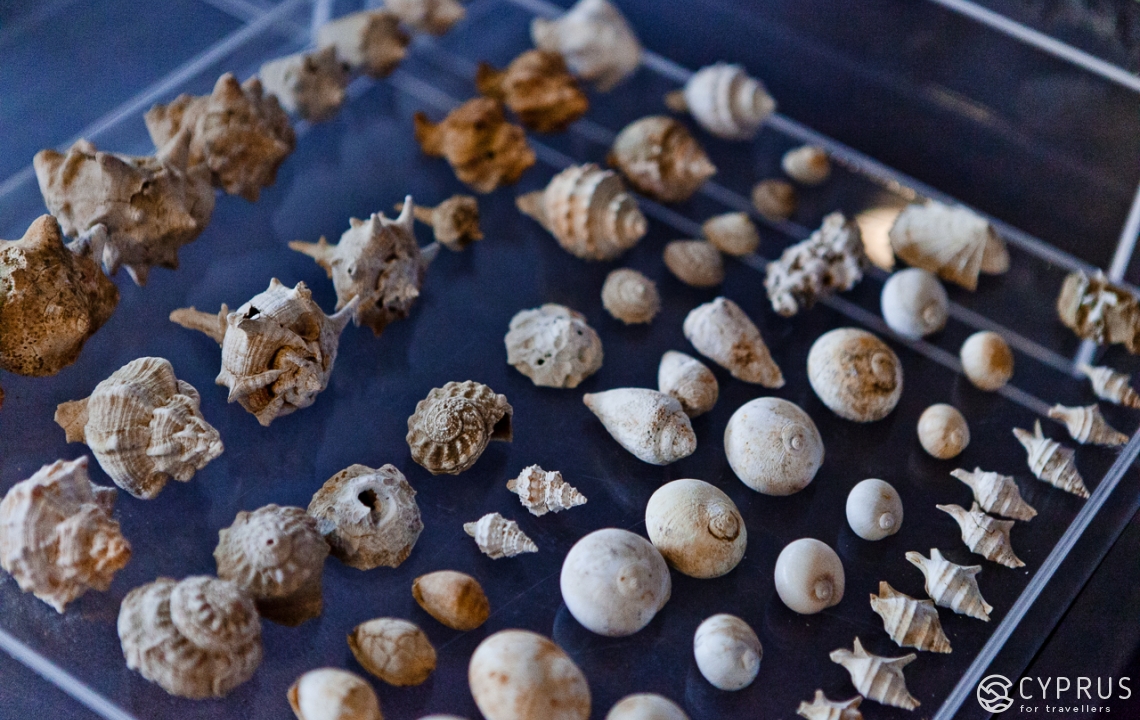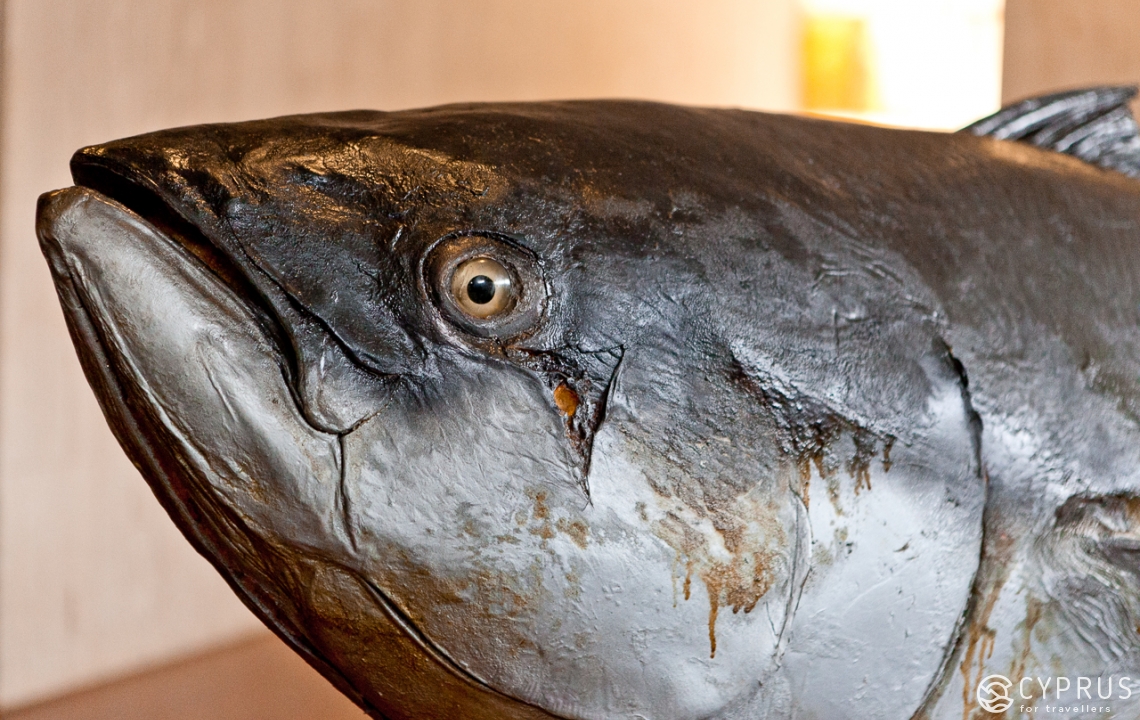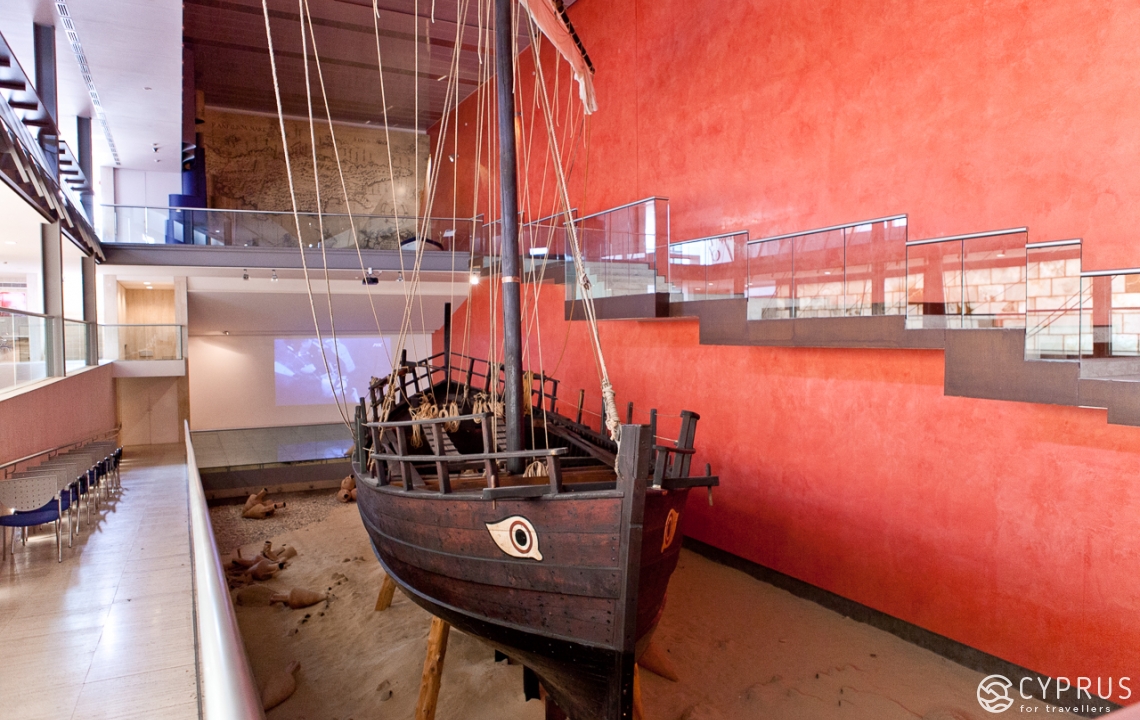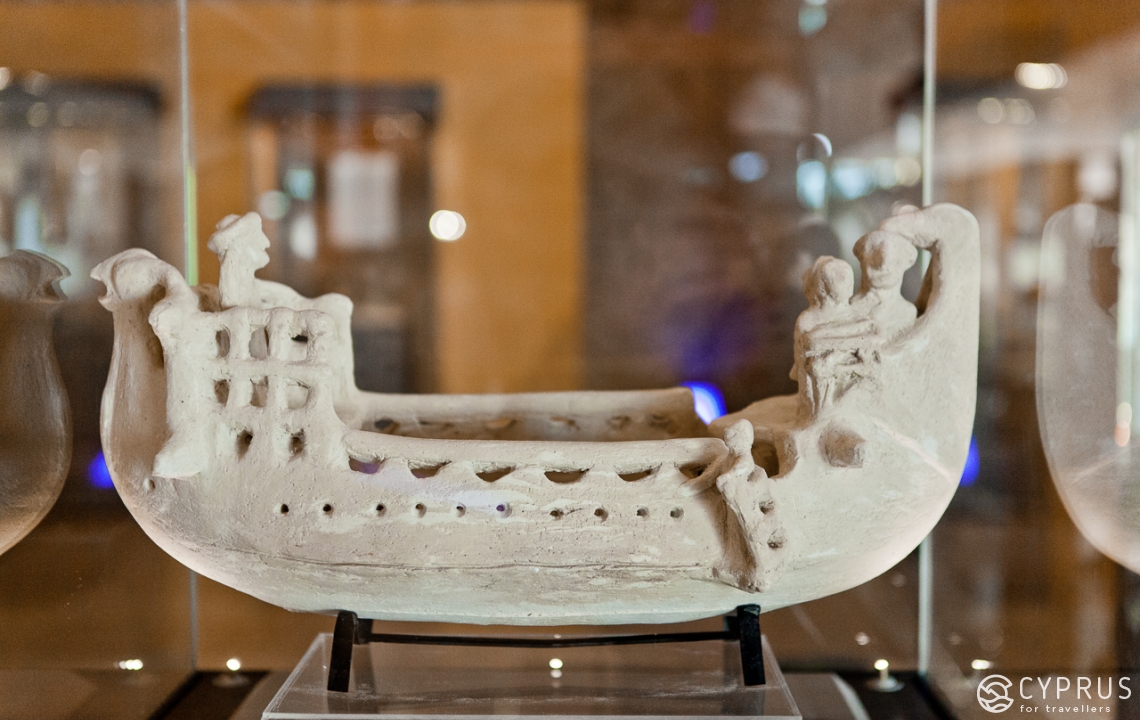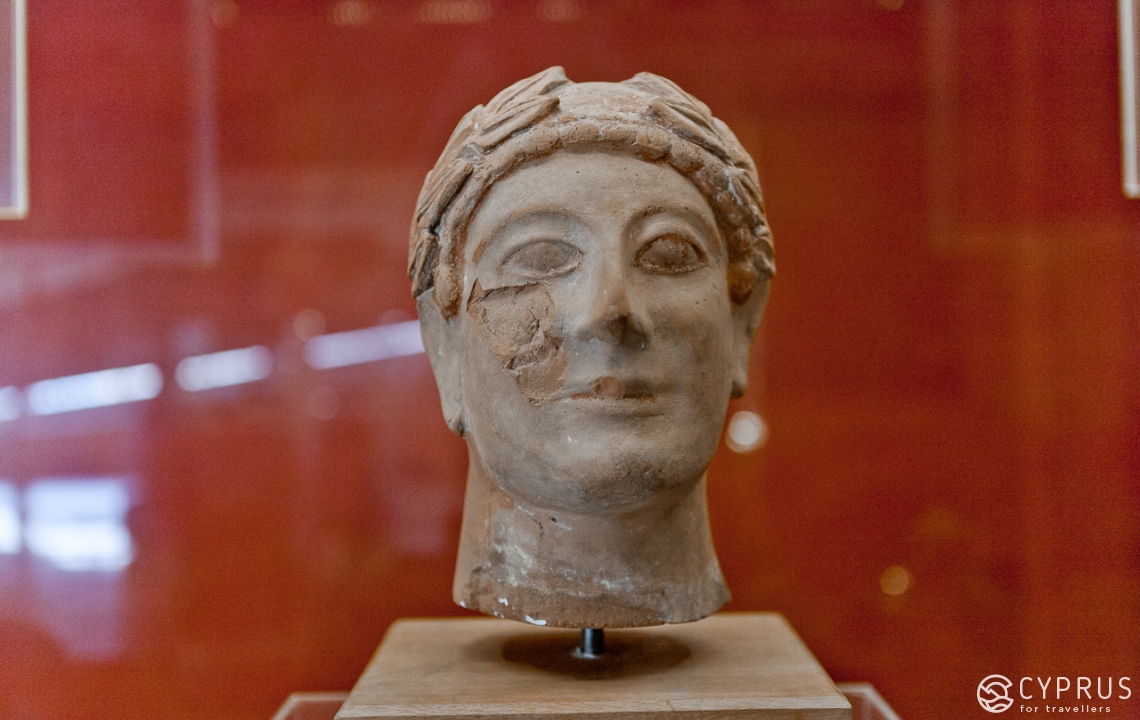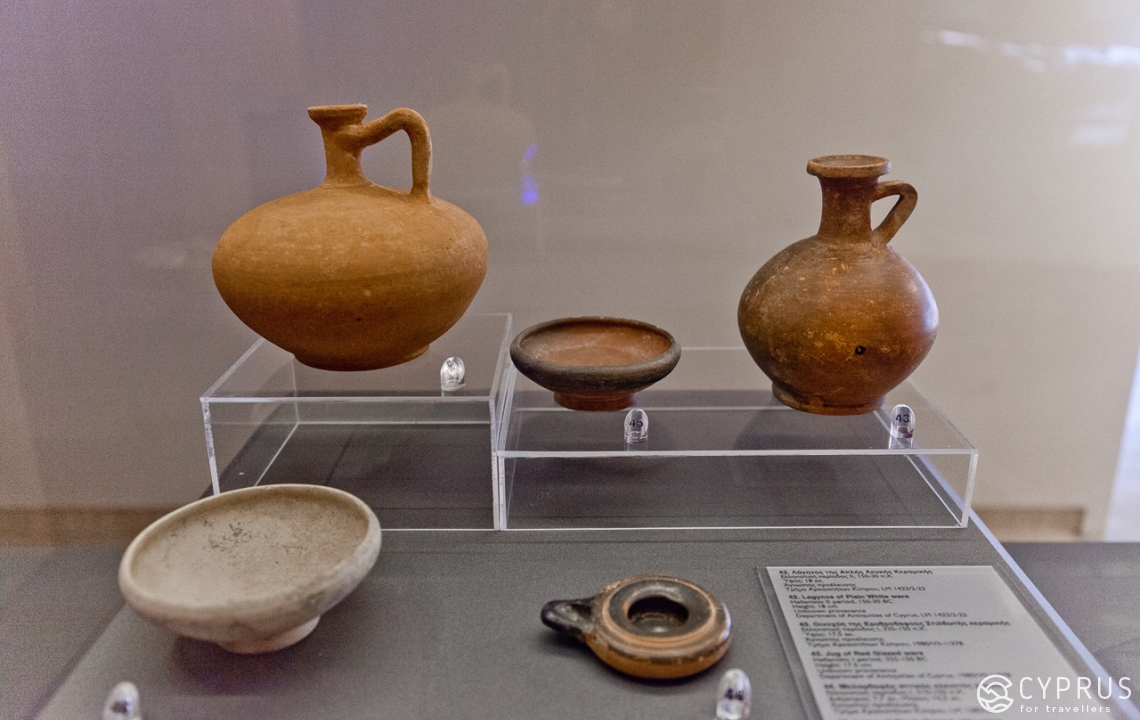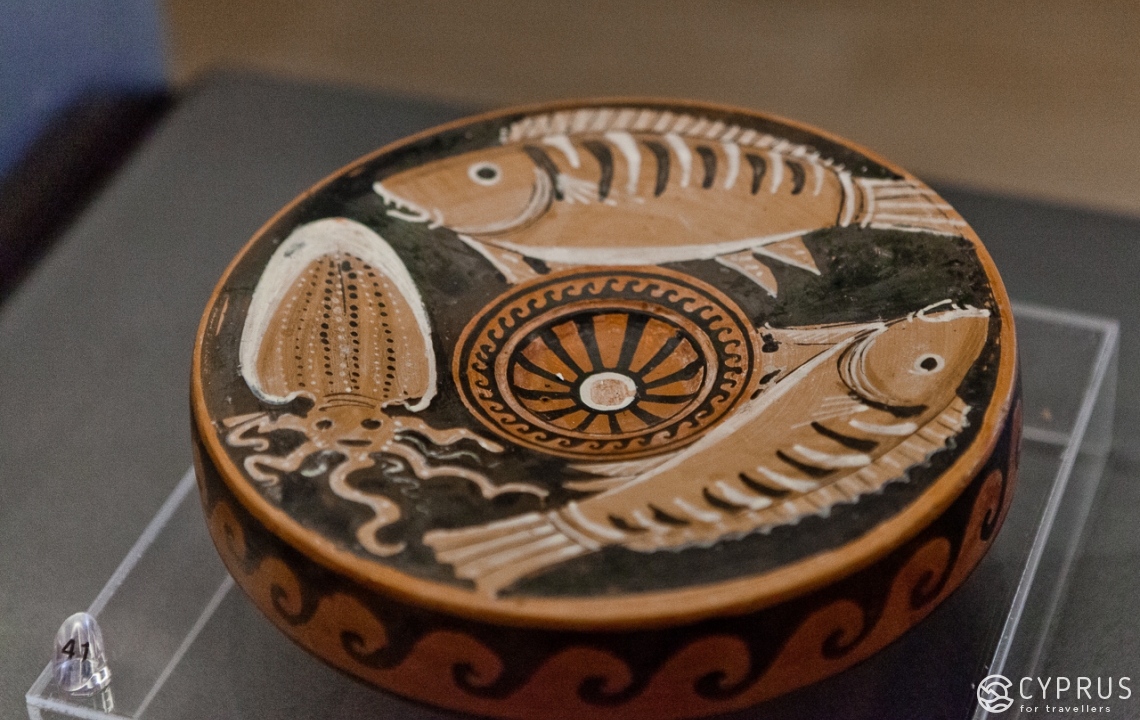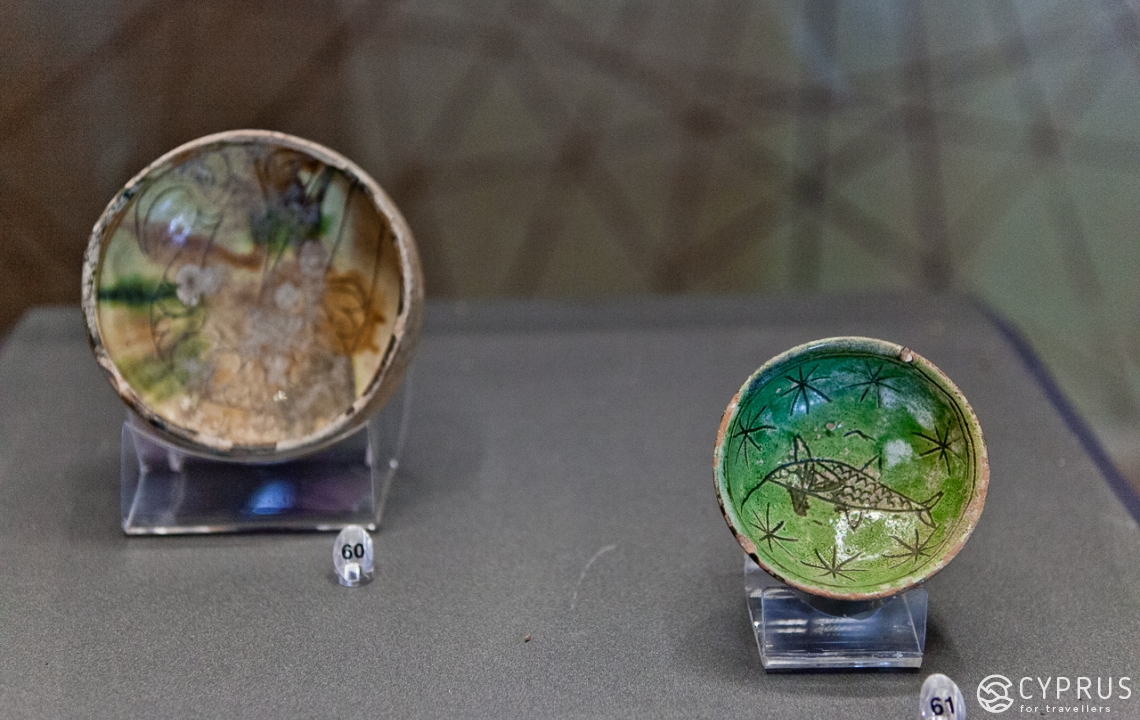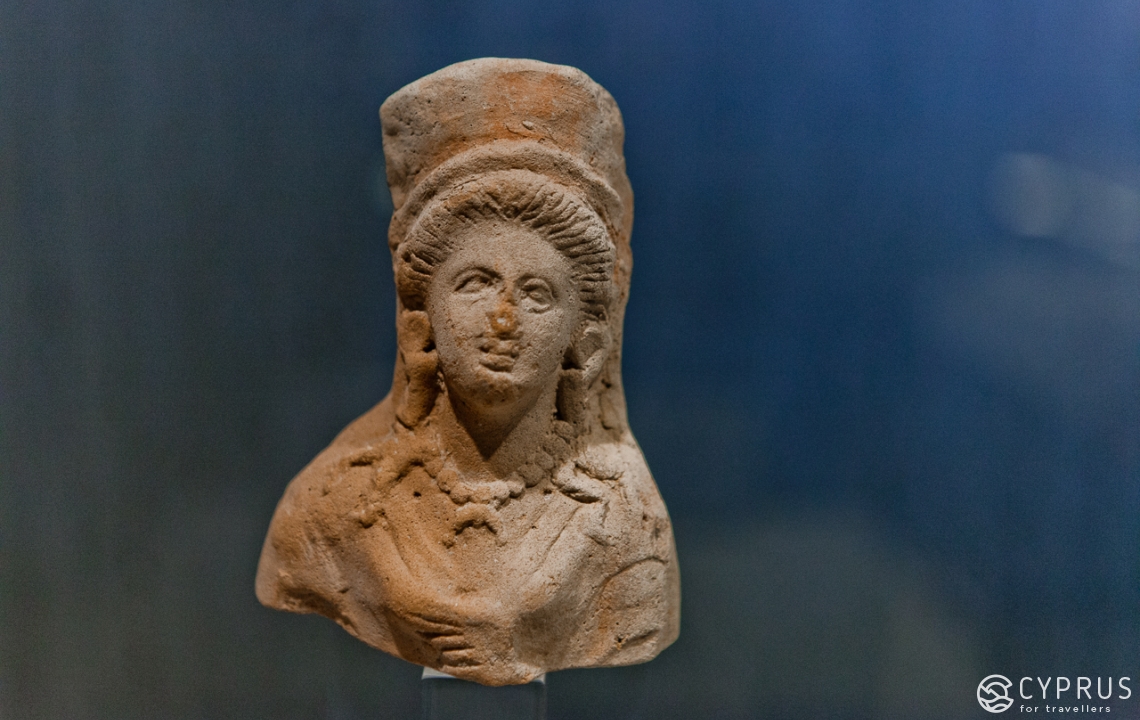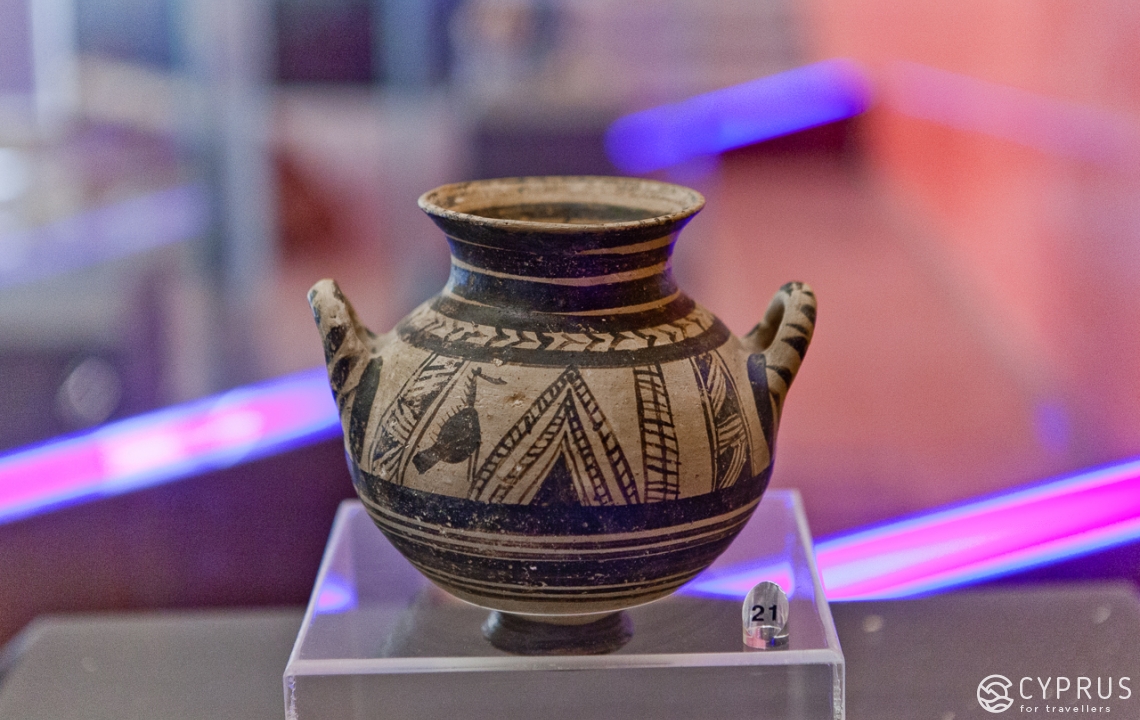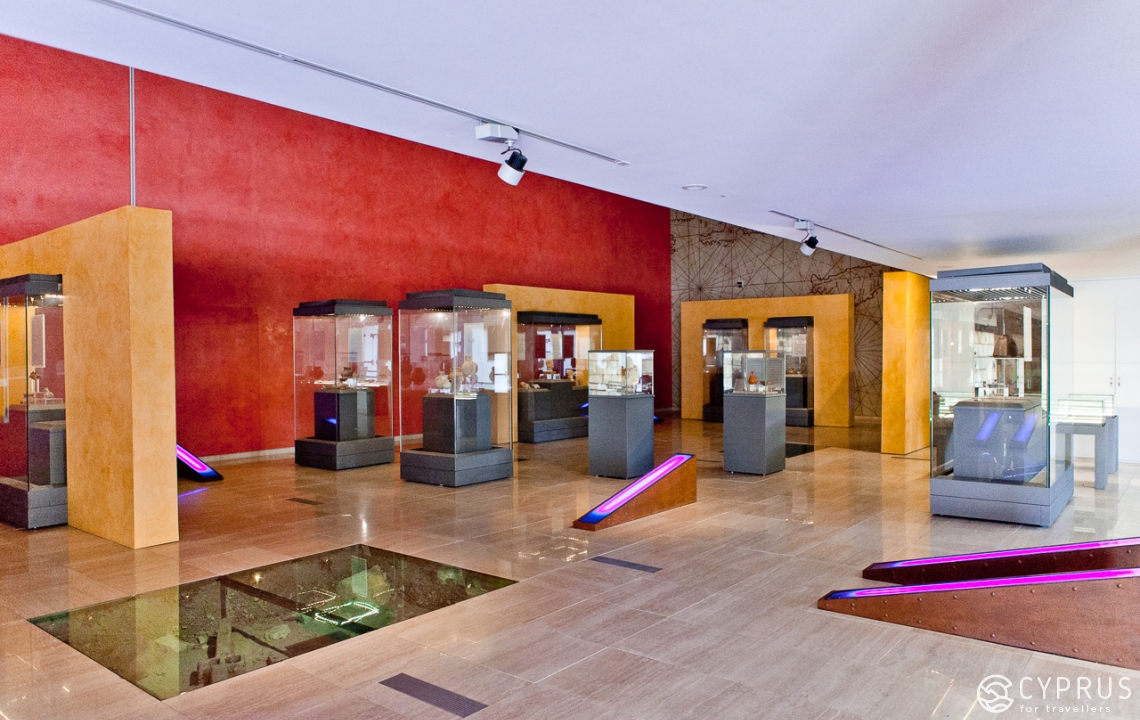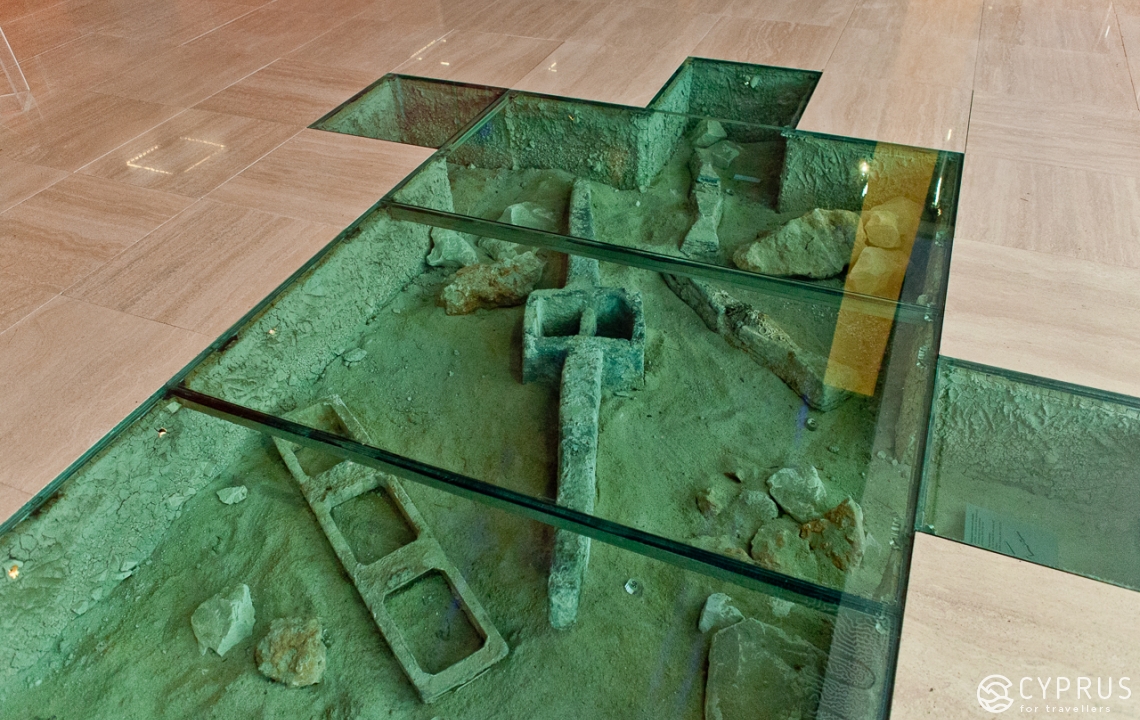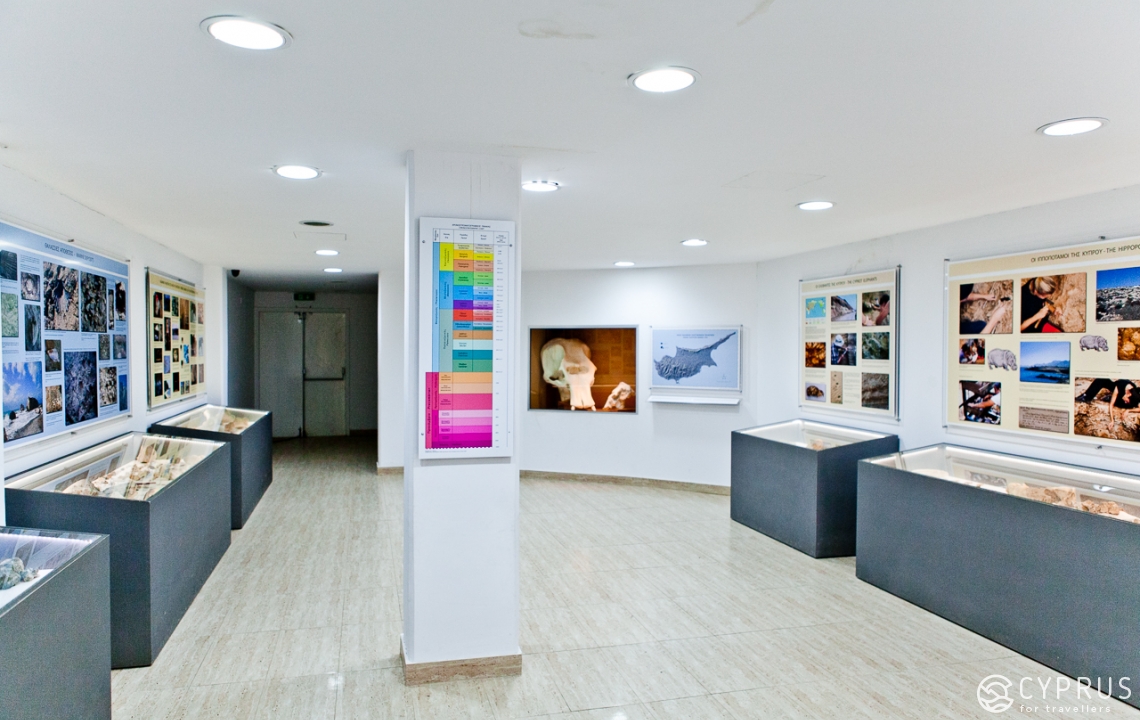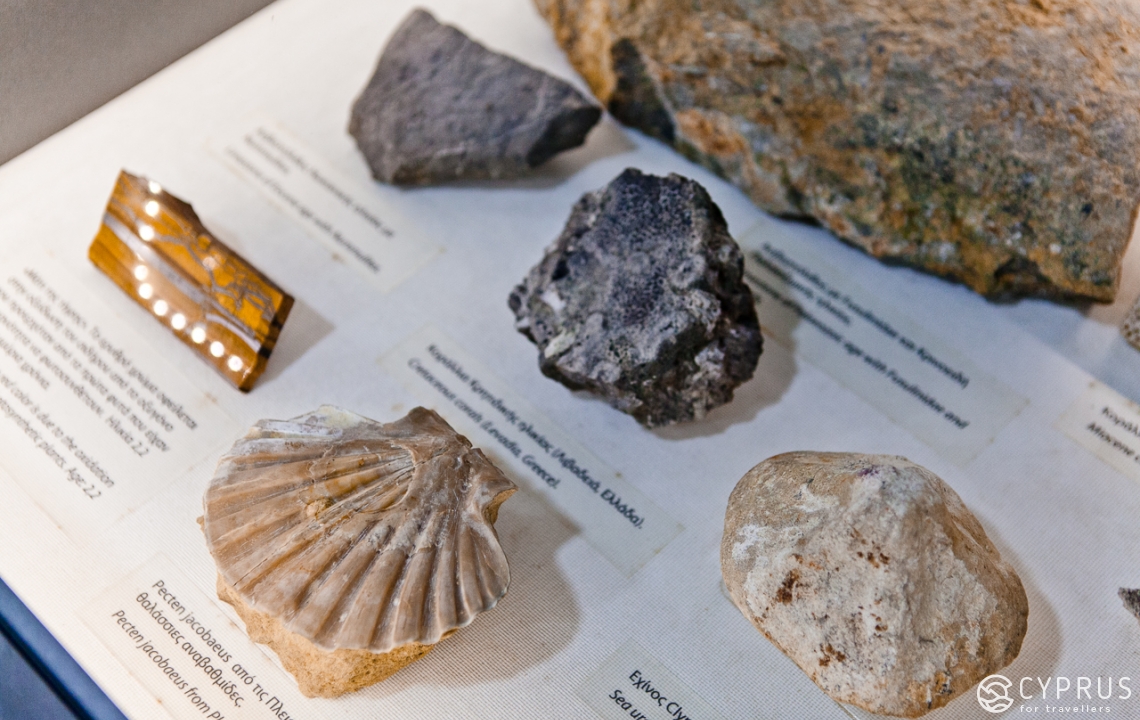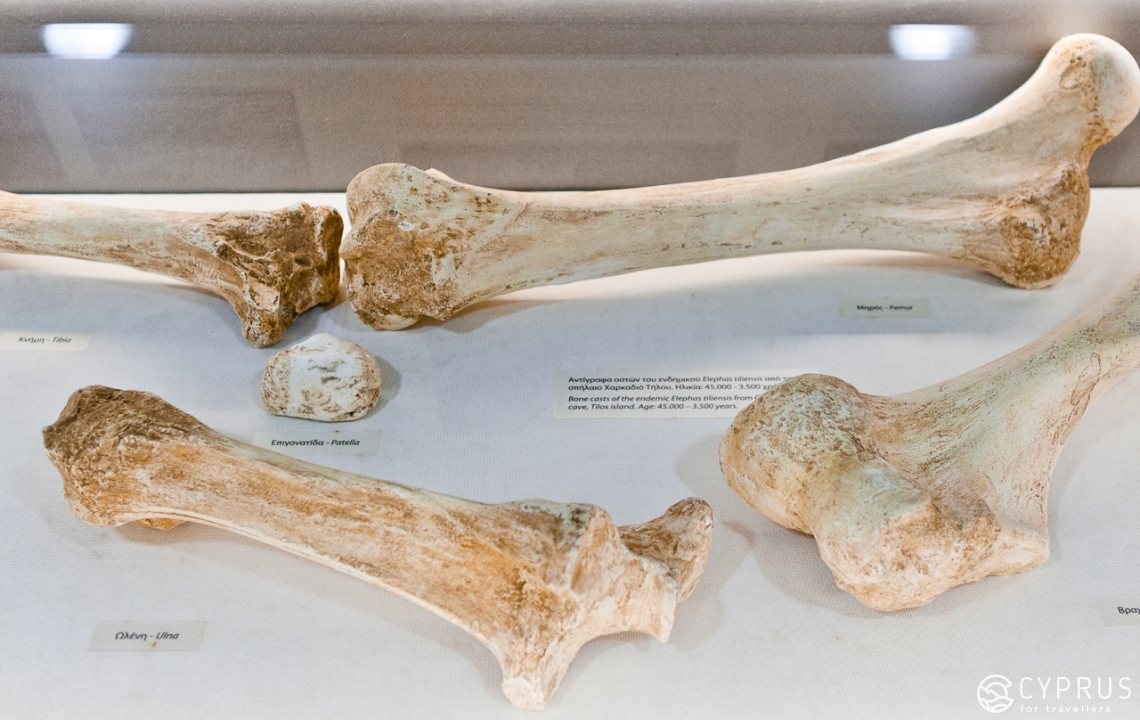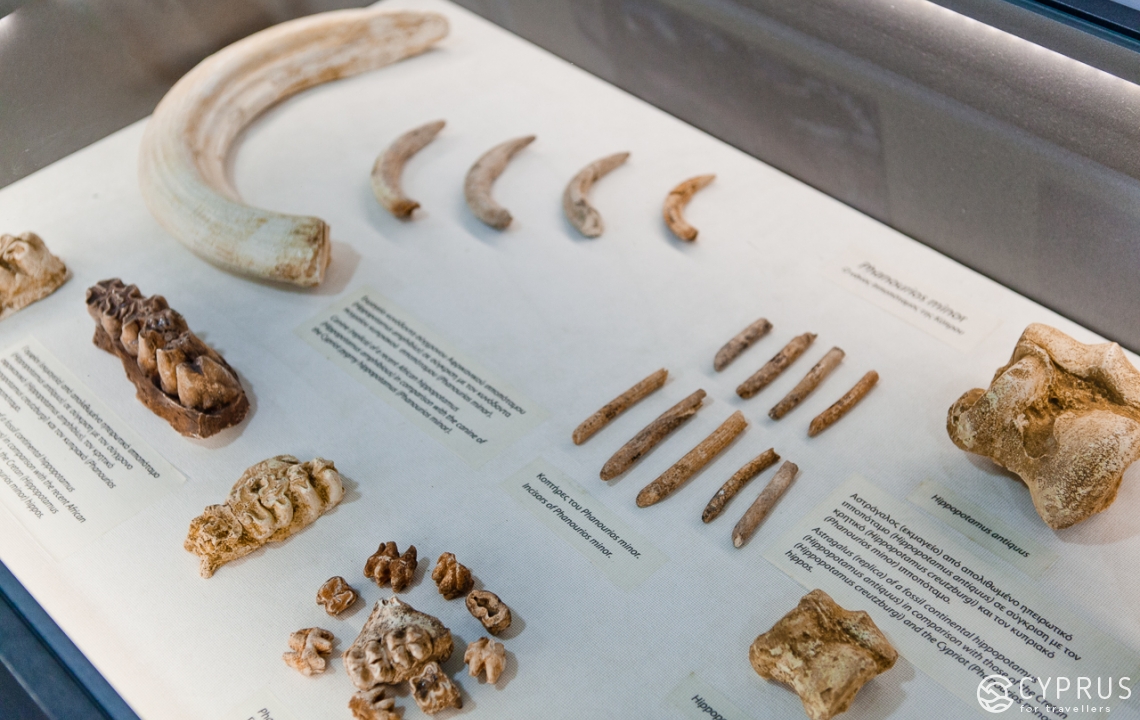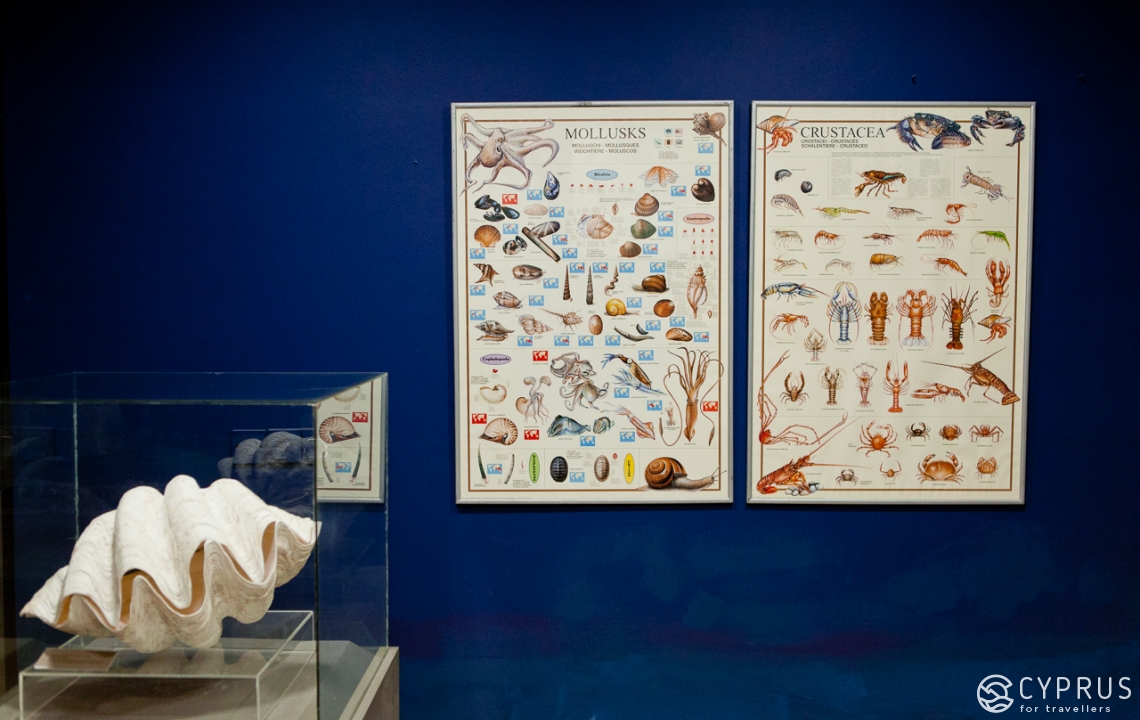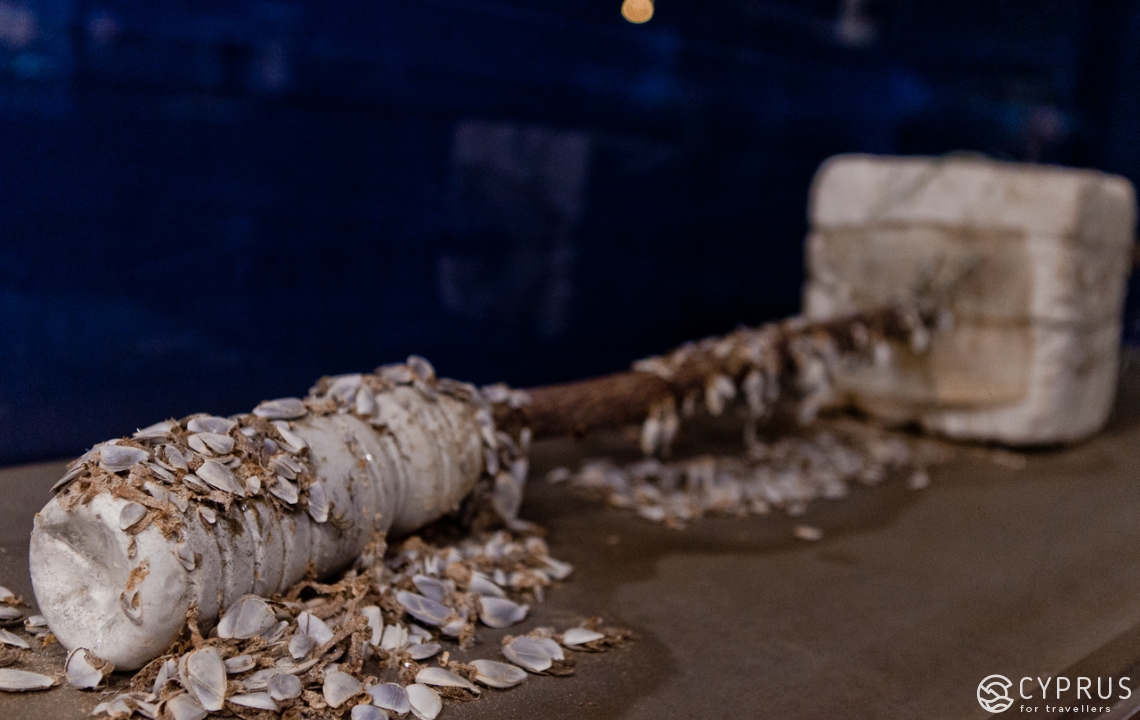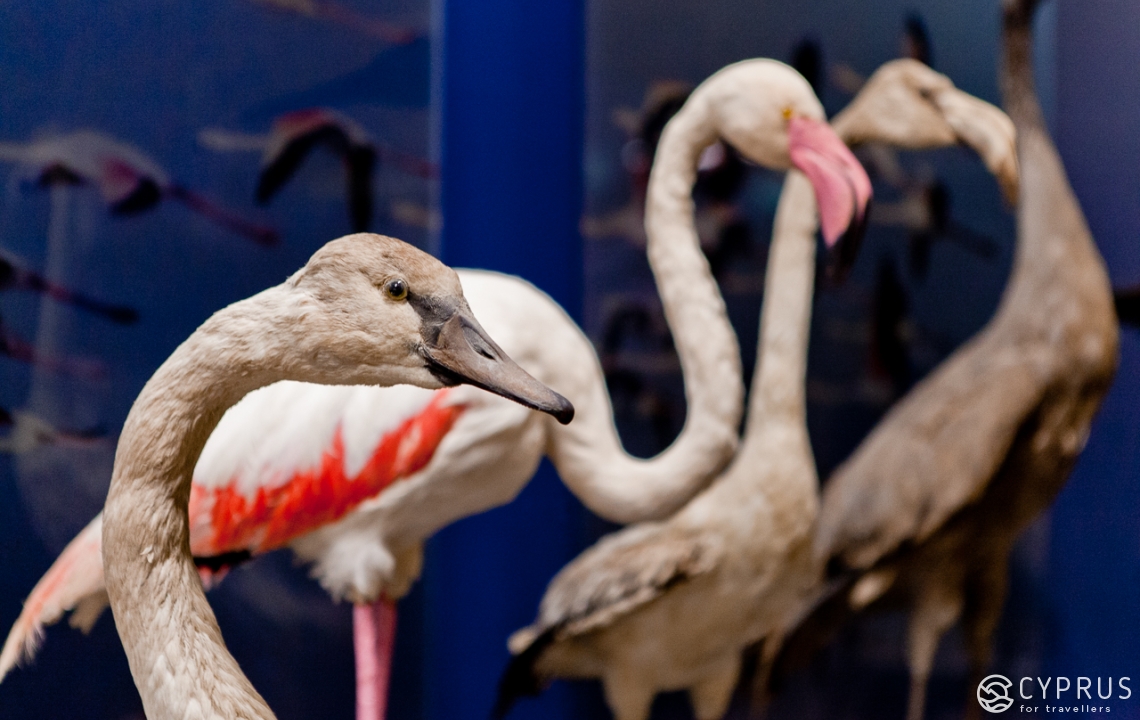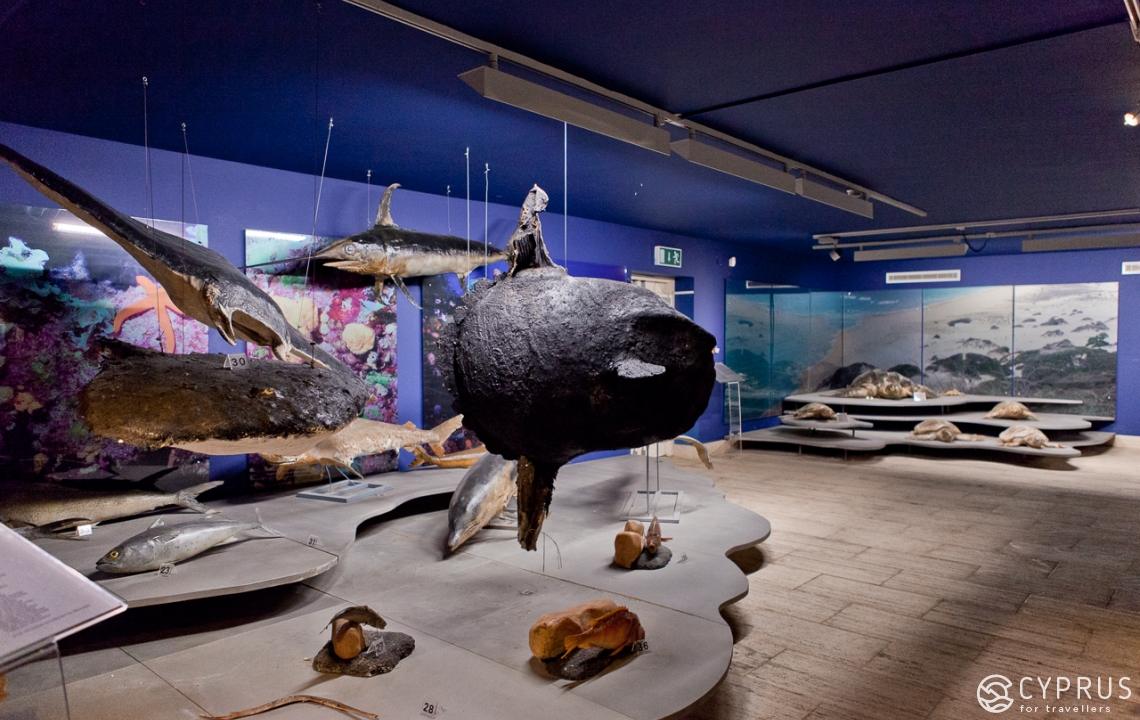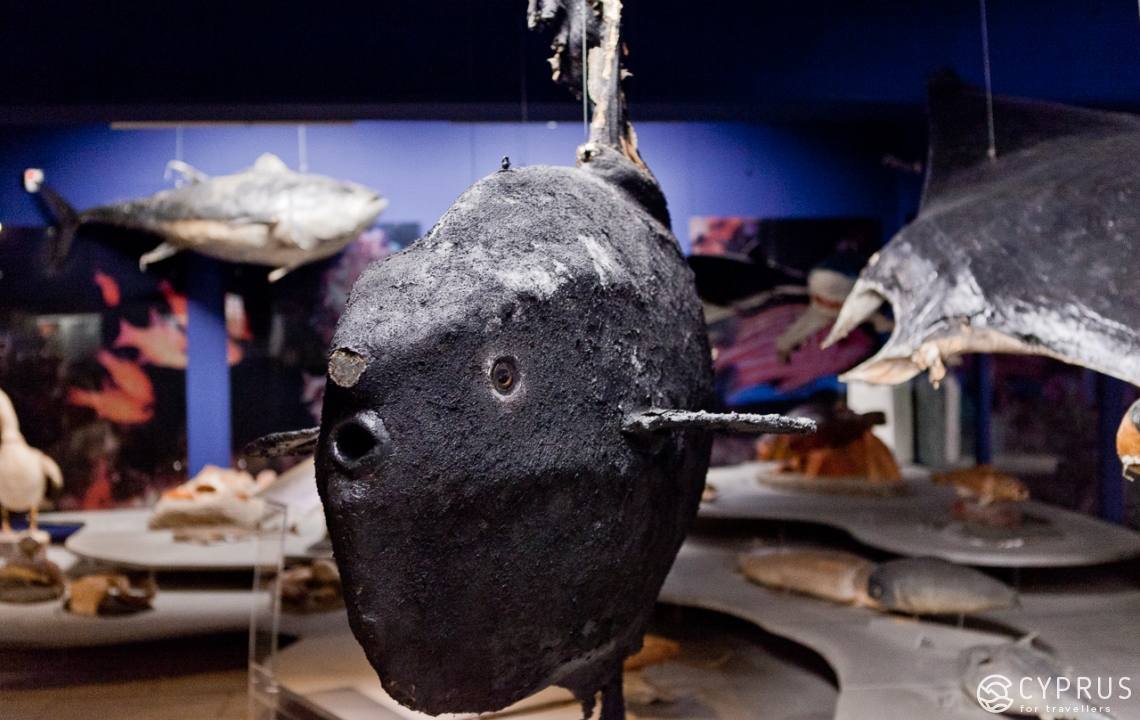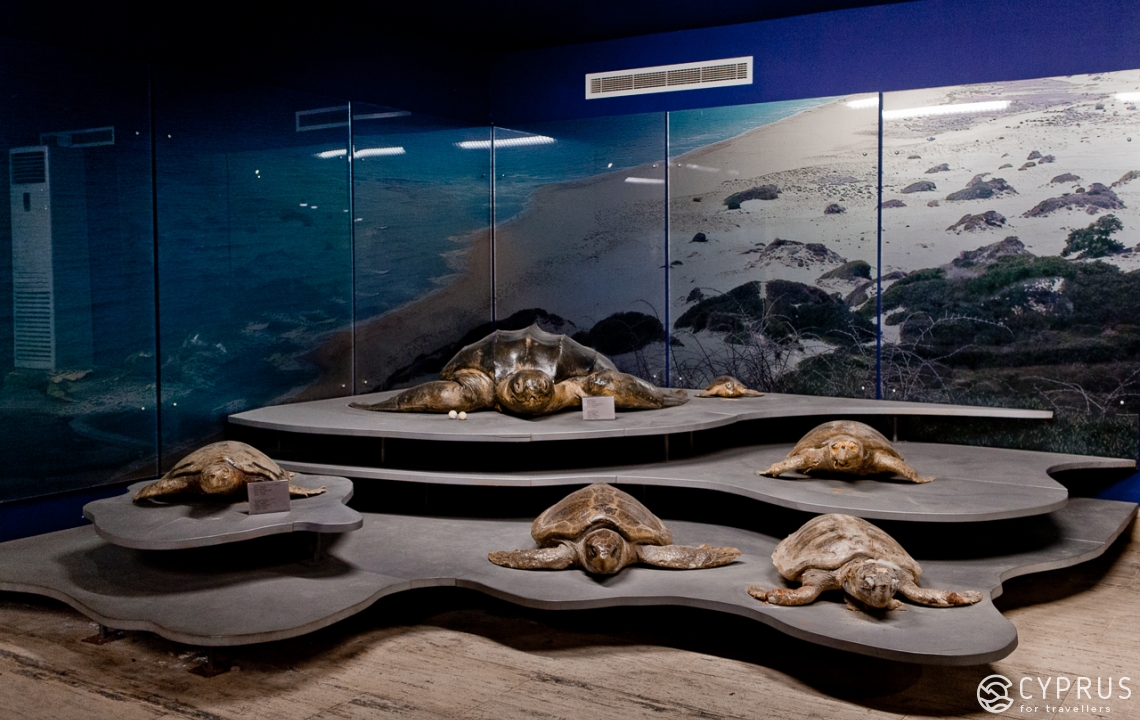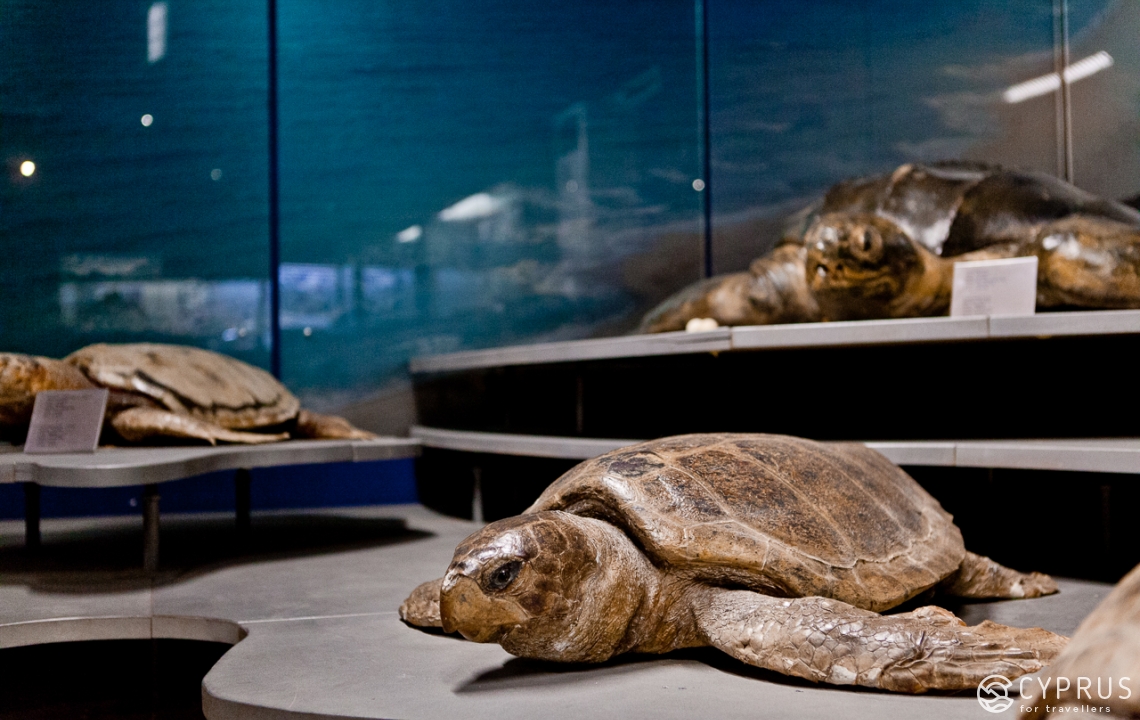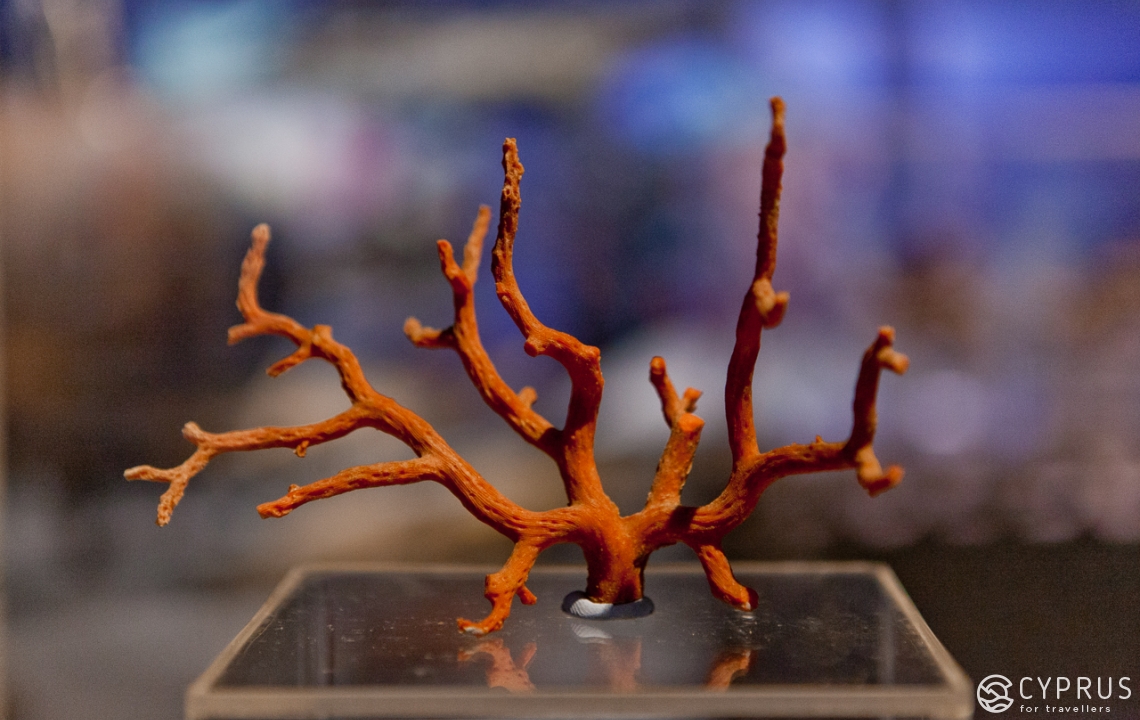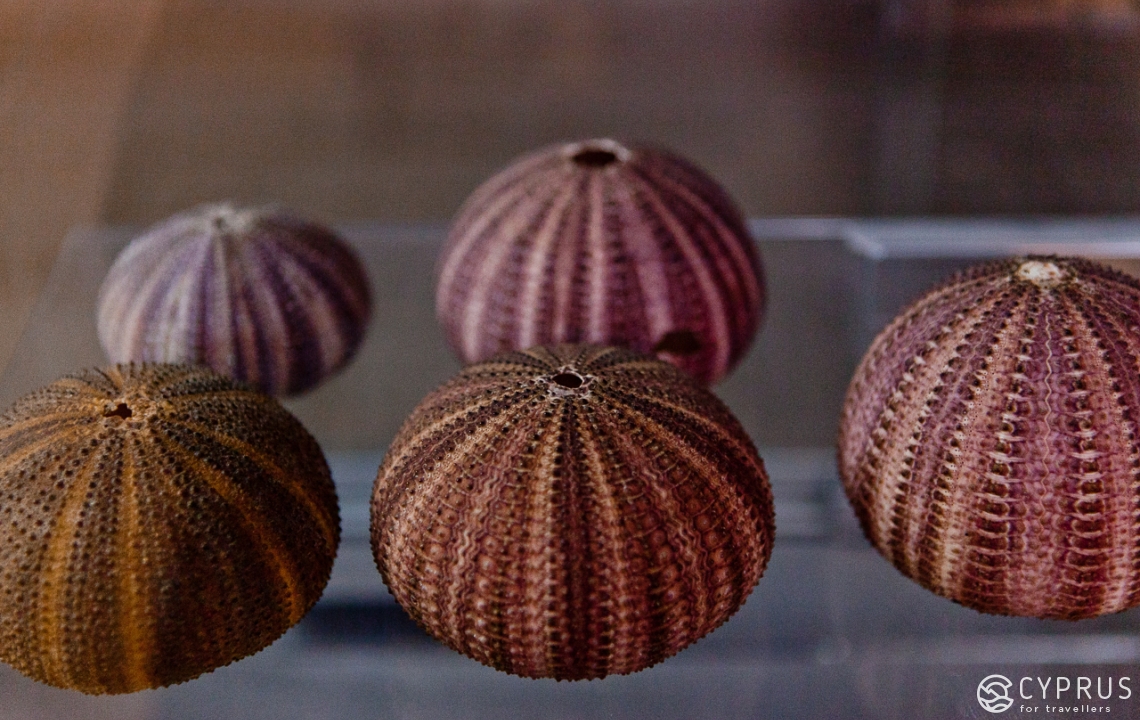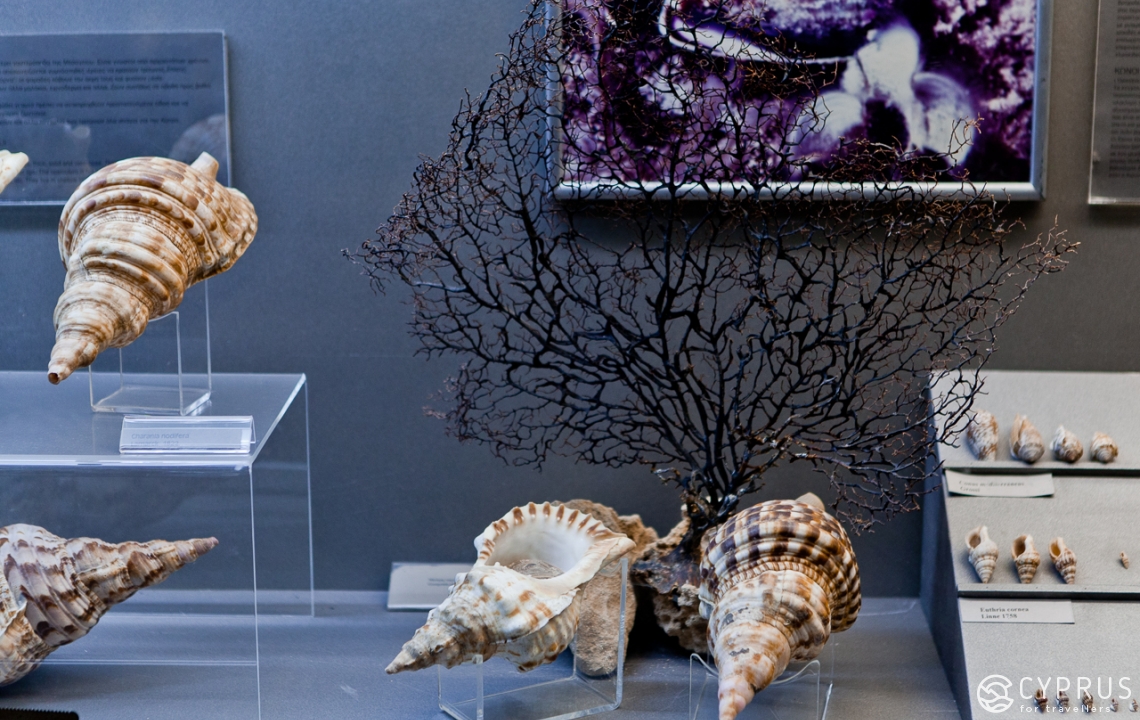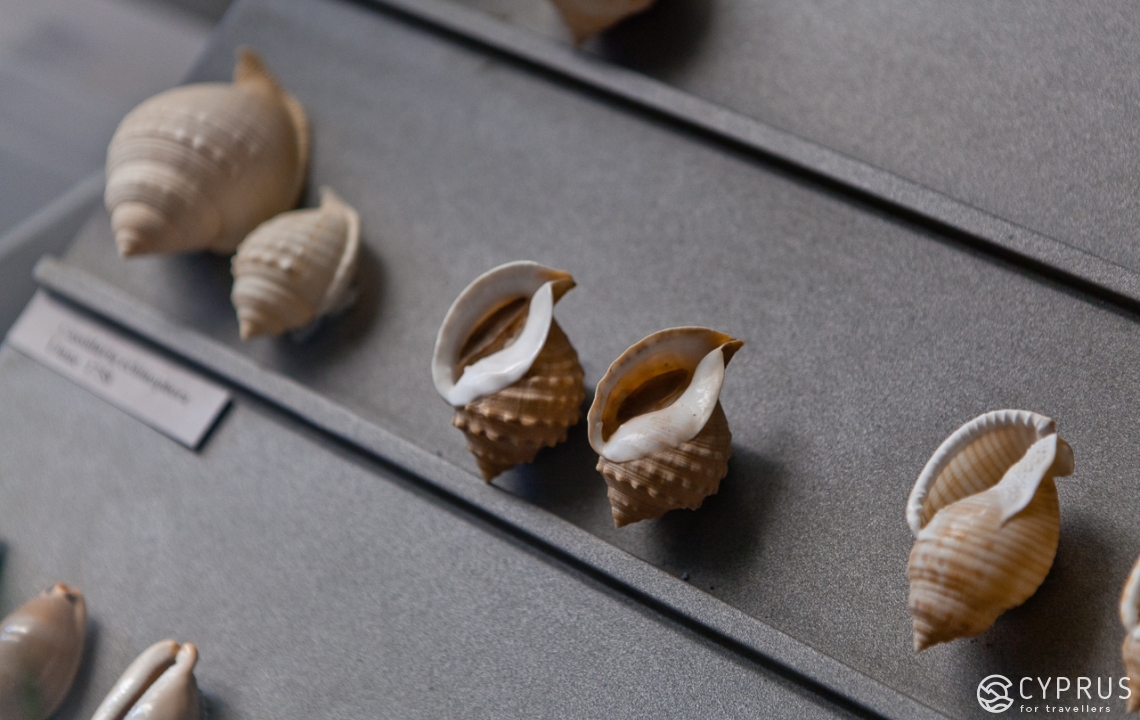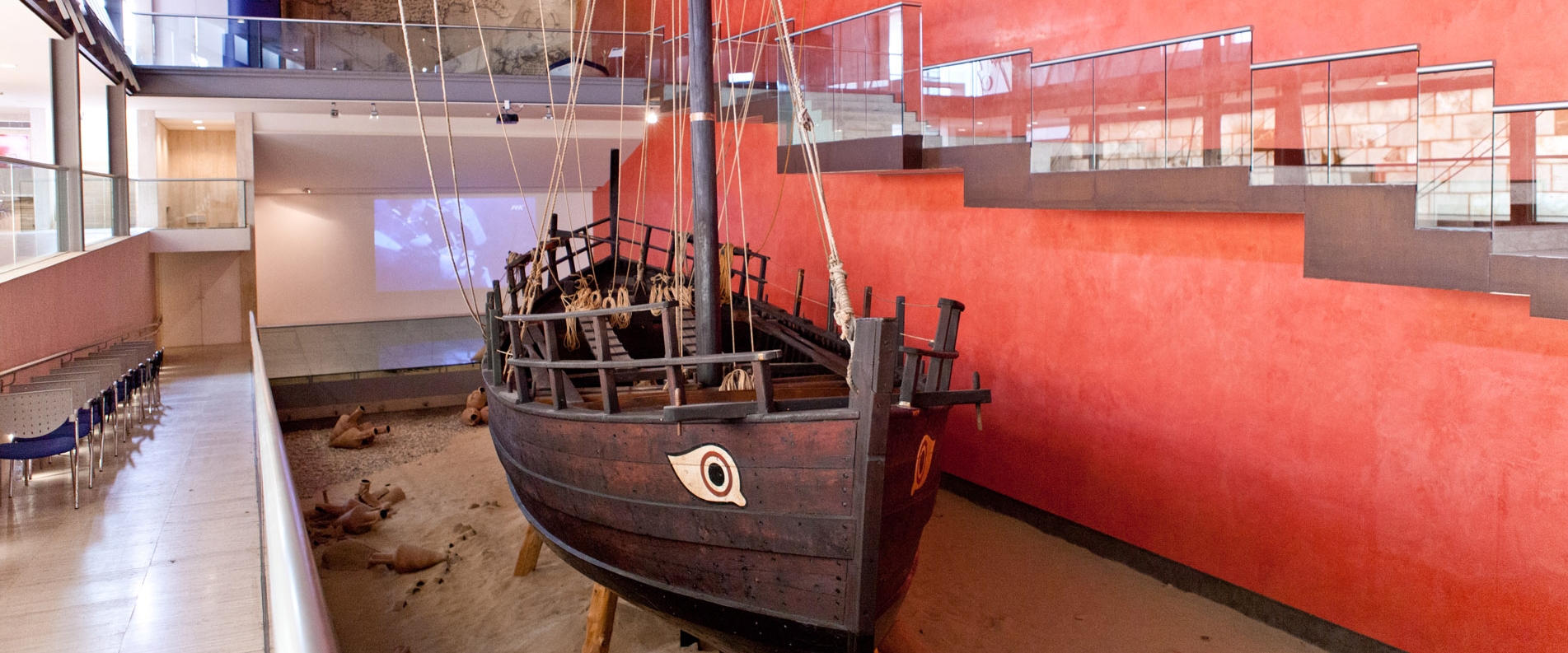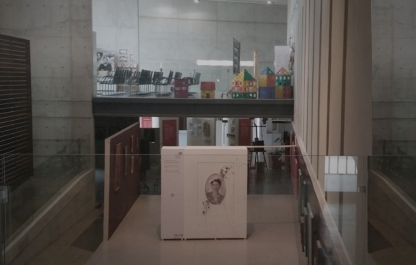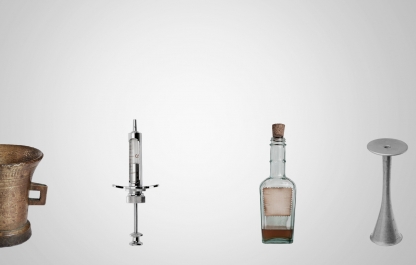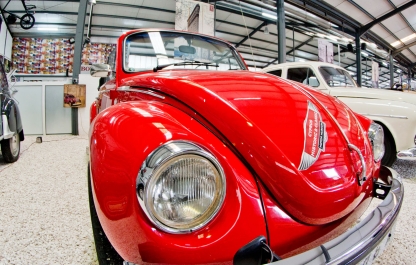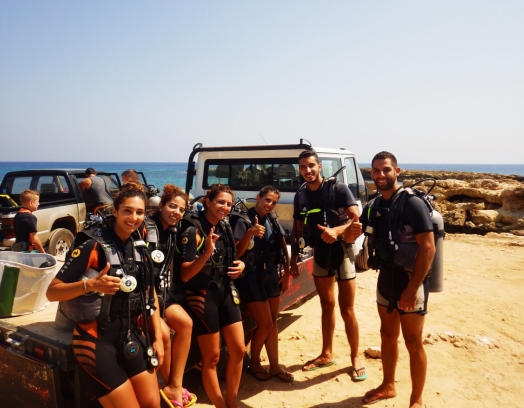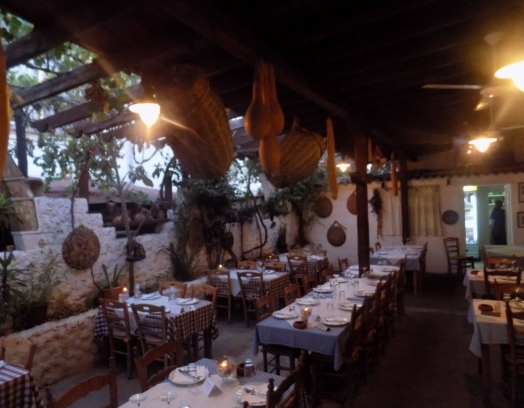The Thalassa Municipal Museum was founded in August 2005 in the center of Ayia Napa. The museum collection is dedicated to the life and history of the Mediterranean Sea. The museum is run by the Pierides Foundation in association with the Hellenic Institute for the Preservation of Nautical Tradition and the Tornaritis-Pierides Marine Life Foundation.
It is the first museum of its kind in the Mediterranean region, whose main objective is to explore the major role that the sea has played in the history of the island and its residents. The exhibition covers a significant period of time from prehistoric times until modernity.
The ultra-modern design of the building with its minimalist, industrial style (by architects Zenon and Cristina Shierebeclis) incorporates marble, onyx, wooden and metal elements. Its exterior perfectly suits the theme of the museum and allows the visitor to focus on its subject matter.
Almost immediately after you enter the museum you will run into a gift shop selling artworks of different media with various marine motifs as well as other souvenirs.

Go up to the top floor (we will explore the museum from hereon by going down). Before you start with the main exhibition, you can visit one of the temporary exhibits of fine art and photography or stop by the internet cafe, if you wish. The museum also offers various educational programs for children. So, for example, during our visit to the museum there was a collage made of children’s drawings that hung over an art installation titled “The Return”. The installation features glazed ceramic boats heading towards the sea — depicted using white sand scattered on the floor.
Among the more significant events organized by the museum to date is the exhibition titled “Shell and the Arts — The ornaments of Aphrodite”, several exhibitions by the Greek marine artist Panatios Tetsis (1925–2016) and the 10th International Symposium on Ship Construction in Antiquity that drew more than 200 well-known scientists from the EU and other countries.
The exhibition is housed on three floors:
The upper floor greets its visitors with an enlarged replica of an antique map of Cyprus, painted during the Venetian rule. This part of the museum is dedicated to the flora and fauna of the island. Hence, a model of a dwarf elephant and of a hippopotamus reconstructed based on their skeletons found on the island (the two species populated the area 75 thousand years ago). Among other objects here are various fossils, stuffed fish and remarkable marine organisms such as a large sunfish, dolphins, intimidating-looking thresher sharks and others.
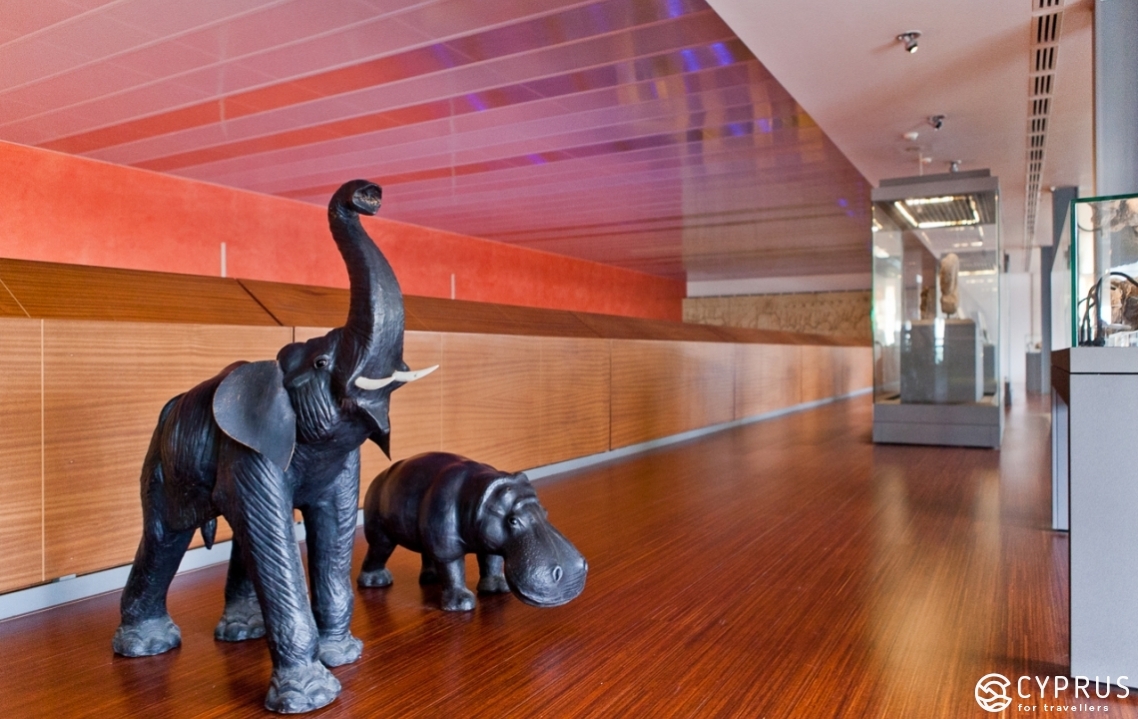
The middle floor includes archeological remains of life on the island that is in some way connected to the sea, such as ancient anchors, a replica of a Mesolithic (9200 B.C.) papyrus vessel (experimental Marine Archaeology), which was used for obsidian carrying in the Aegean, local and imported ceramics depicting marine life, jewelry made with seashells that belonged to the first island settlers, and many others.
The historic part of museum collection was put together with the help of private collectors (Christos and Lukia Conomis), numismatists (a collection of coins — a gift from Achilleas Doroteo) as well as large institutions of Cyprus (the Department of Antiquities, the Pierides-Tornaritis Marine Life Foundation, the Hellenic Institute for the Preservation of Nautical Tradition and the personal collection of Demetrios Z. Pierides), which provided parts of their collections for use by the Thalassa Museum.
Both the upper and the middle floors create a historical framework for the main part of the exhibition — a life size replica of the ancient ship of Kyrenia of the Classical period (400 B.C.), which sank near the coast of Kyrenia many centuries ago and was recently lifted to the surface. Its remains are currently exhibited at the Ancient Shipwreck Museum in Kyrenia Castle.
Meanwhile, the replica of the ship, on exhibit at the Thalassa Museum, is no less impressive thanks to its size and resemblance to the original. There is also a 1967 documentary film about the discovery of Kyrenia playing in the back.

Did you know that the Kyrenia ship is pictured on the 10, 20 and 50-cent coins? Meanwhile, its replica that is housed in the Thalassa Museum has garnered worldwide fame following its tour of the US, Japan, Spain and Germany.
But let’s go back to the original, which sank approximately 2300 years ago, but can now be viewed at the Shipwreck Museum inside the Kyrenia Castle. The museum was opened to the public in March 1976.
In 1965 the ship was discovered by the Kyrenian Greek Cypriot Diving Instructor and Municipal Councilor Andreas Cariolou, who was cultivating sponges at a sea depth of 33 metres. It took a long time (from 1967 to 1969) to bring the ship to the surface and was made possible thanks to a group of marine archaeologists from the University of Pennsylvania. Kyrenia is the oldest known shipwreck. Radiocarbon dating of the ship puts its approximate date of construction at 389–400 BC.
Shortly after Kyrenia sank, the sand at the bottom of the sea created a vacuum around the ship, blocking oxygen and sealing access to various marine wildlife. But despite this the wood of the ship still suffered serious damage due to remaining underwater for so long. When the scientists started their work on it the texture of the wood resembled soaked bread. Polyethyleneglycol was used to bring back firmness to the wood.
A curious fact: the Kyrenia ship (measuring 15 meters by 4.5 meters) was built with Jerusalem's oren using a technology that is the opposite of what is practiced today.
Instead of building the hull of the ship first, they would begin by trimming the keel line and later reinforcing it with ribs. Kyrenia used to transport cargo along the coast of Anatolia, traveling between the islands of Samos, Cos and Rodos (cargo included mealing stones and almost 400 wine amphoras, which could be used as counterweight). The kitchenware discovered on the ship points to the fact that its crew consisted of four people. They mostly ate almonds, which were discovered inside jars almost completely intact, as well as fish that they were able to catch on their own.
The ship was intended for long-term service. Researchers were able to identify that it had gone through several major renovations. At the time of the shipwreck Kyrenia was at least 80 years old.
The first obvious theory suggested Kyrenia’s worn-out condition as the cause of the sinking. However, the iron wedges that were discovered underneath the hull as well as on board of the ship suggested that Kyrenia had been attacked by pirates, which frequently operated along the northern coast of Cyprus. This theory explains the absence of the crew and their belongings on the ship, since they were probably kidnapped and sold into slavery.
The bottom floor — as if going further underwater you find yourself standing on sand-colored floor, surrounded by dark blue walls. Stuffed amphibians, carnivorous fish as well as various animals and bird species inhabiting the region of the Mediterranean and Aegean seas are soaring above your head. This floor houses the natural history collection of the Tornaritis-Pierides Marine Life Foundation. An exhibition of various seashells, corals and fossils — is popular among museum visitors. Its core consists of the fossils discovered in the vicinity of Aiya Napa (approximately 130–165 million years old). The exhibition comes with detailed information on its objects. But even without it its visitors are likely to be engaged by the huge sharks “swimming by” and the examples of deep sea fish that are hard to come by otherwise.
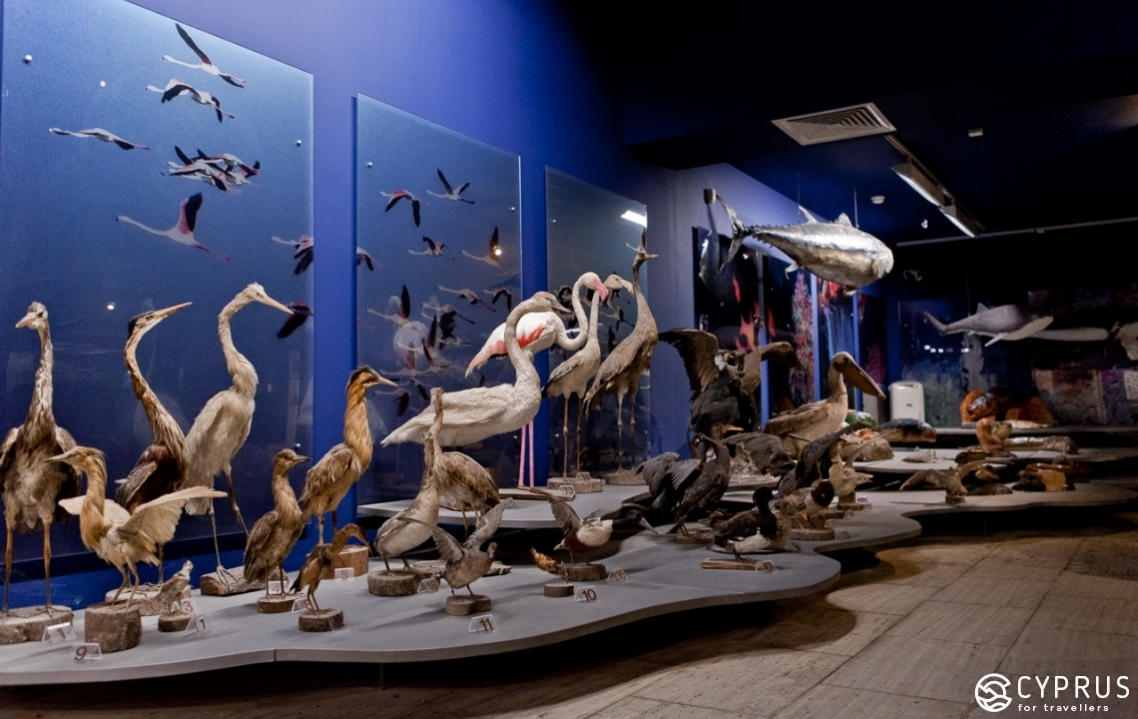
The Museum states that “no animal was harmed” in the making of the exhibitions, and that all of the objects on display were collected following their natural death.
One last thing to mention about the museum is that it also includes a conference hall that is used for various performances, lectures and seminars. The museum also hosts outdoor events (there is an amphitheater) such as music concerts, theater shows, festivals etc.
And if you are a true fan of the sea and its treasures, then we suggest also visiting the Protaras Ocean Aquarium (located a ten-minute car ride away) either before or after your visit to the Thalassa Museum.
The aquarium provides an opportunity to see numerous marine species alive and also has a small but very interesting zoo. You can take a break inside a local cafe or by taking a stroll down one of the paths lined with blooming flowers and listen to the singing of tropical birds.
To learn more about the Aquarium, please read this.
Address: Cavo Greco Avenue, 19, Protaras.
Telephone: +357 23741111
Website: www.protarasaquarium.com
Email: ocean@cytanet.com.cy
Thalassa Municipal Museum in Ayia Napa:
Address: Kriou Nerou 14, Ayia Napa
Working hours: summer (June 1 – September 30) Monday 09:00 – 15:00; Tuesday – Saturday 09:00 – 17:00; Sunday 15:00 – 19:00
Winter (October 1 – May 31) Monday 09:00 – 13:00; Tuesday – Saturday 09:00 – 17:00
Entrance fee: 4 euros (groups and university students — 2 euros per person), school students — 1.5 euros.
Telephone: +357 23816366
Website: www.thalassamuseum.org.cy
Email: thalassa.museum@agianapa.org.cy
See you soon!
